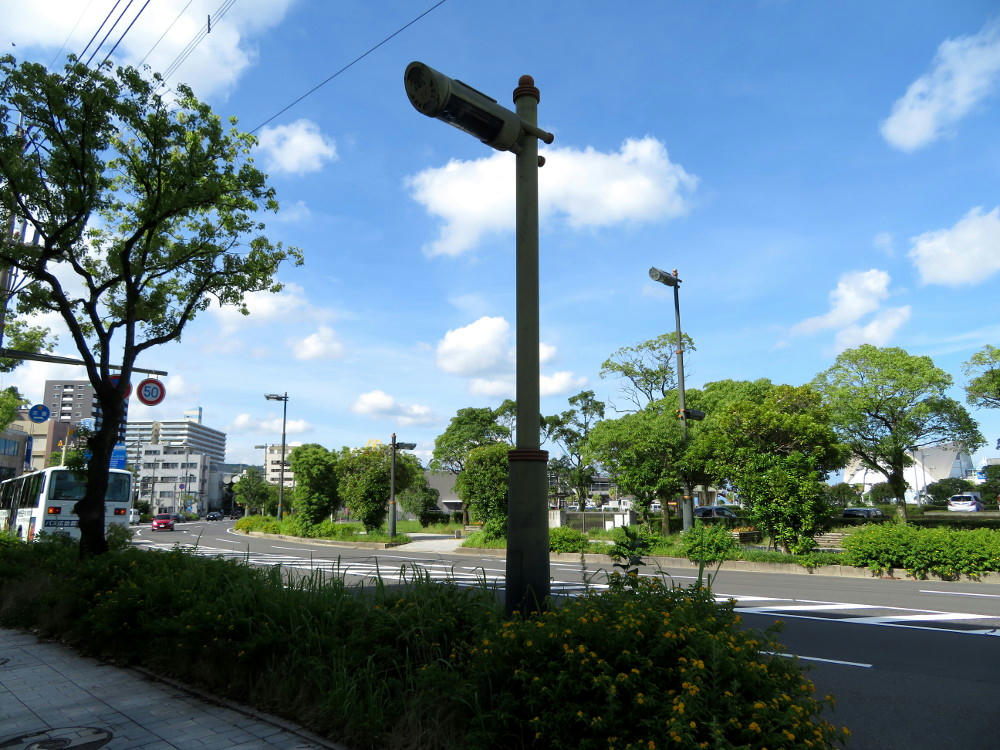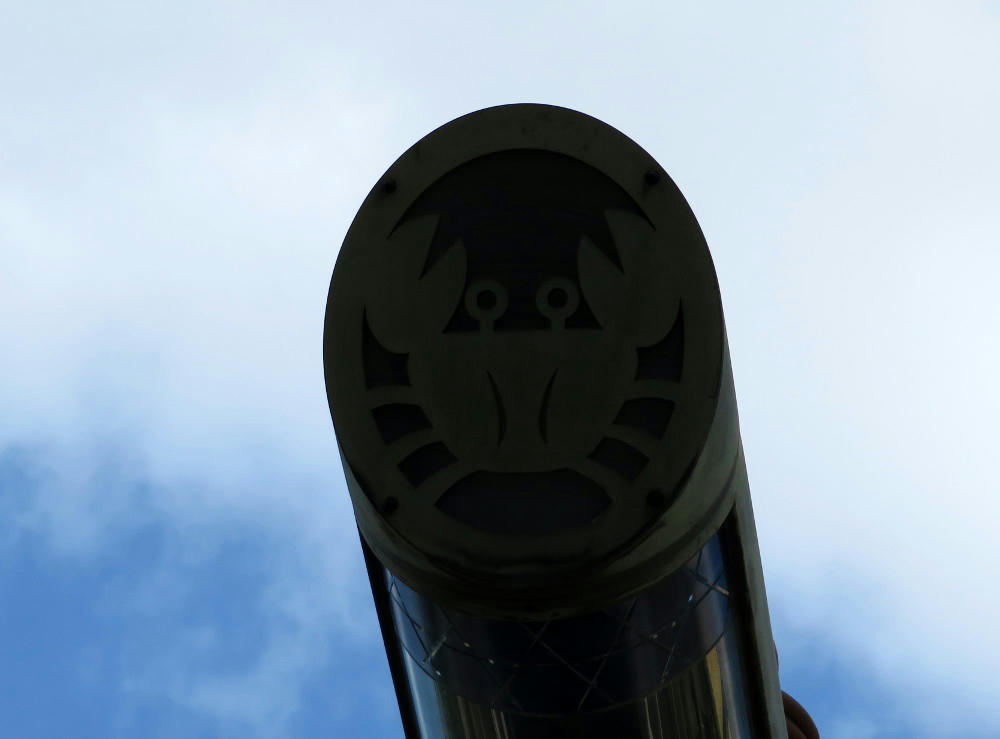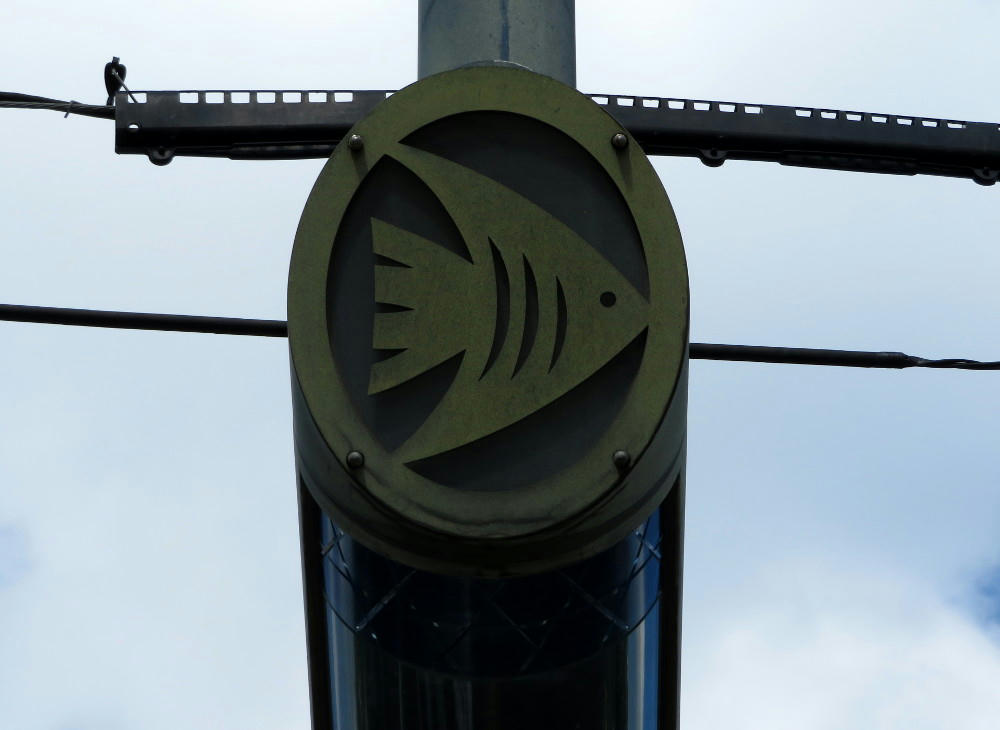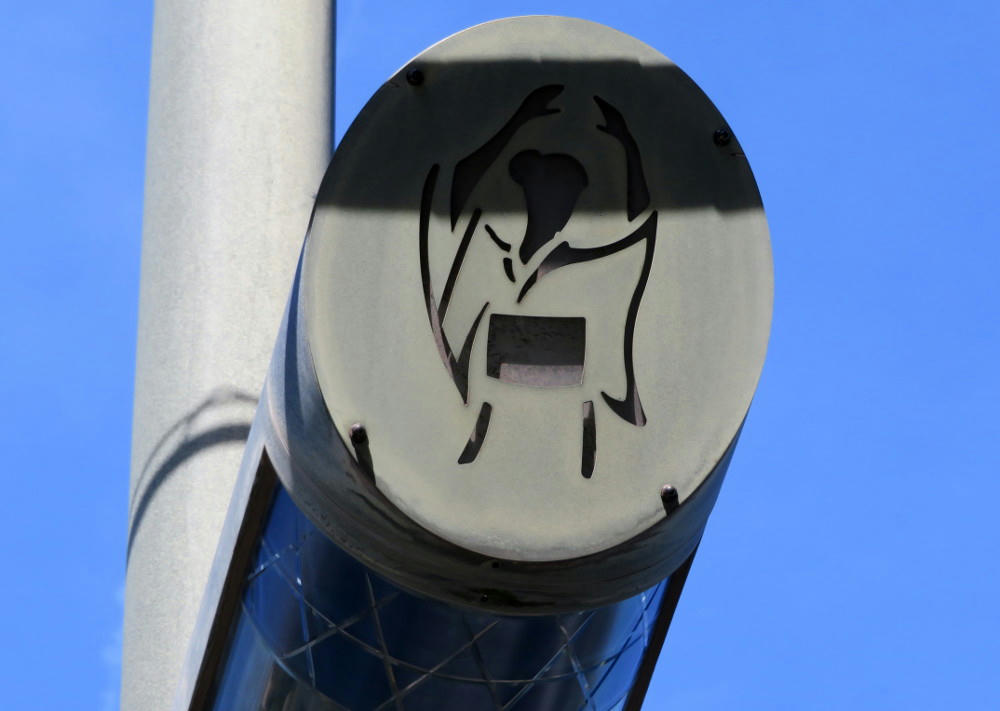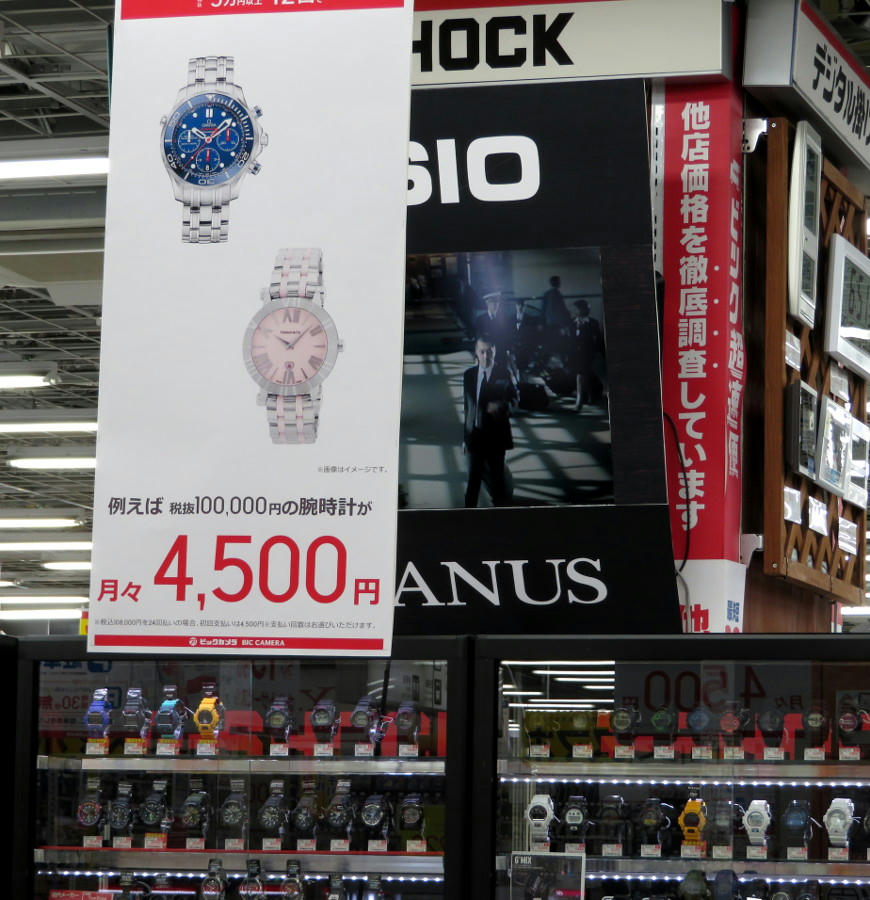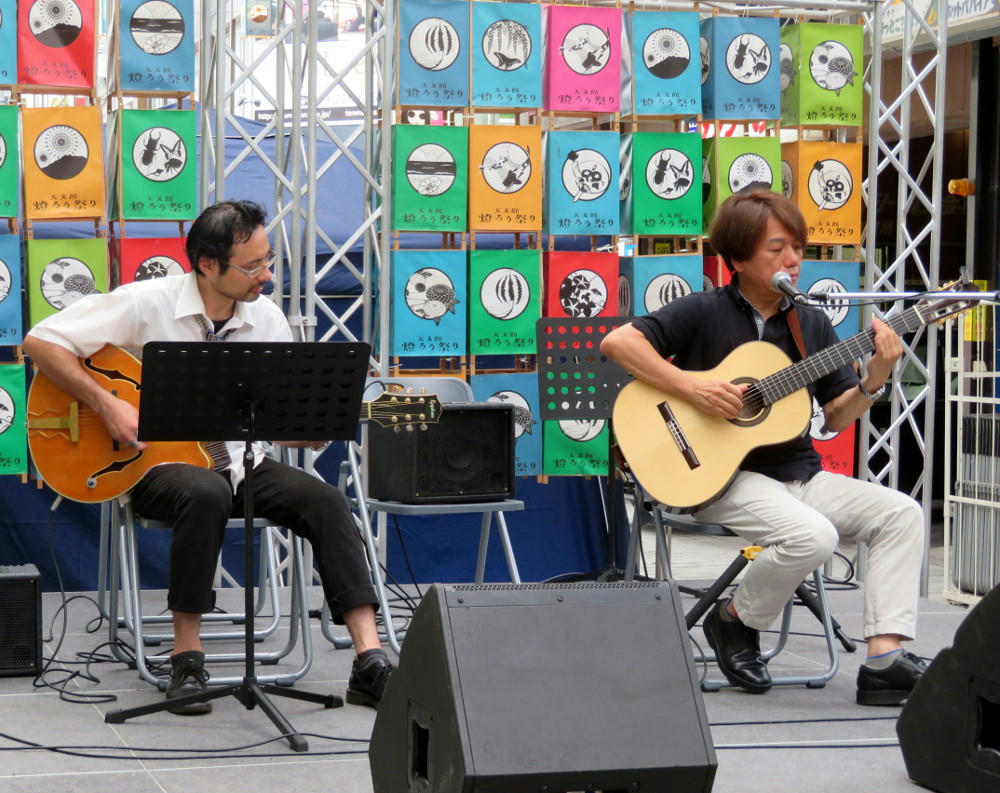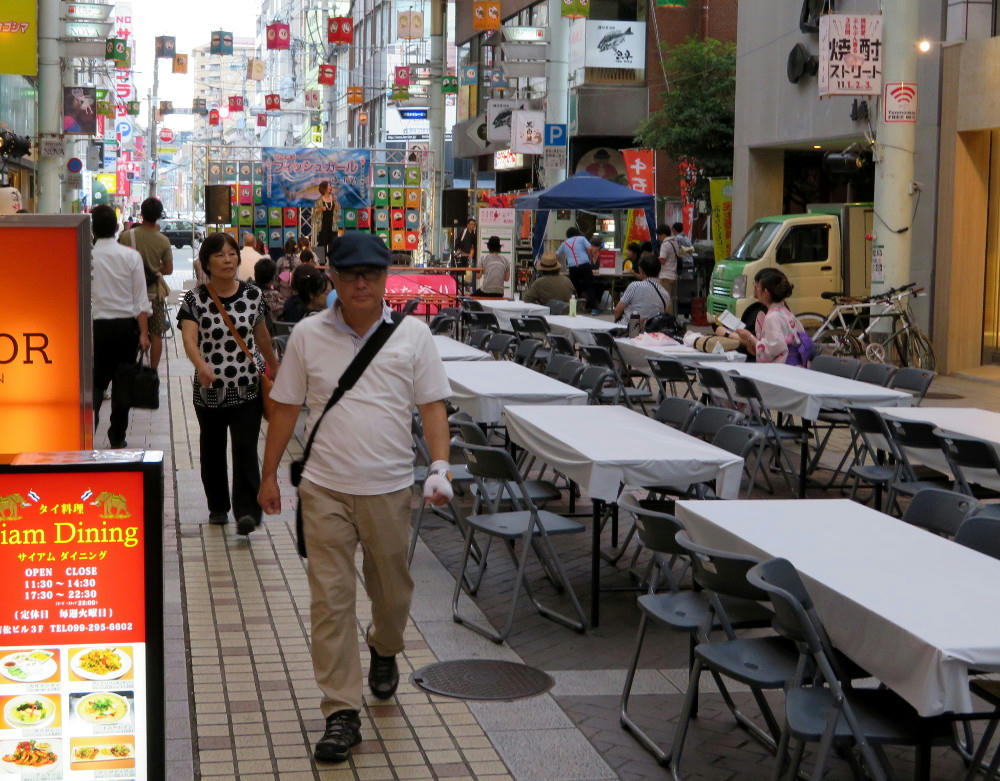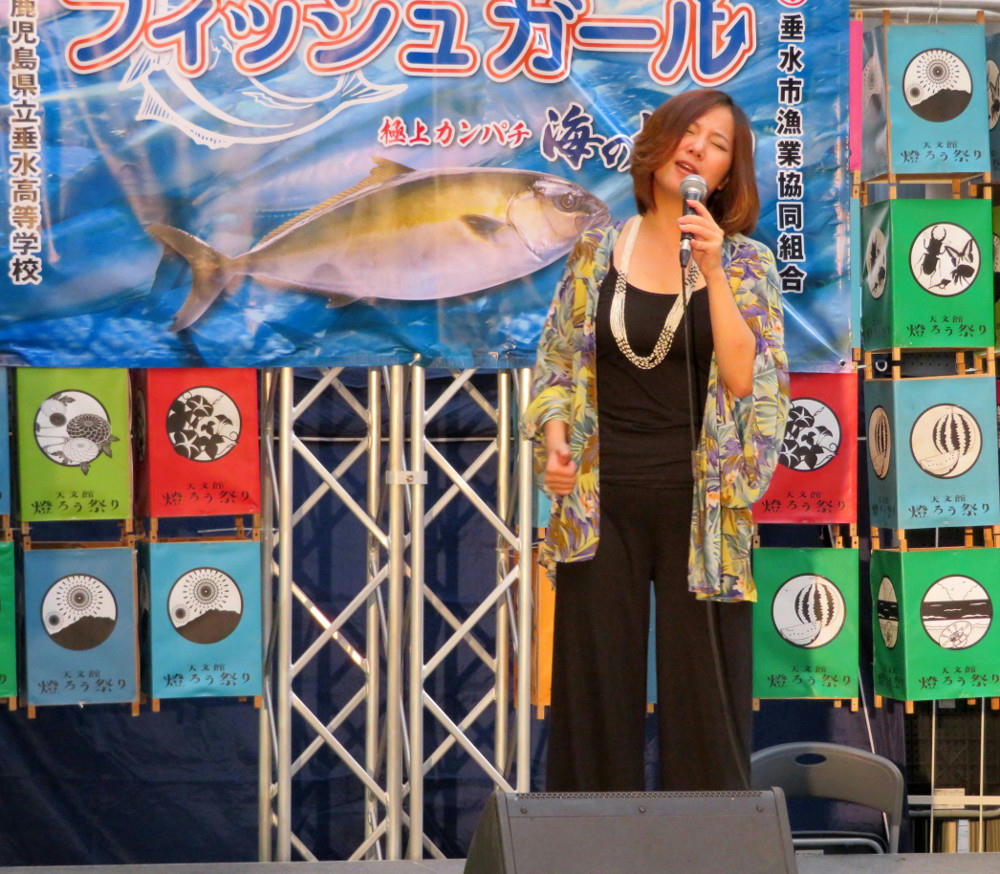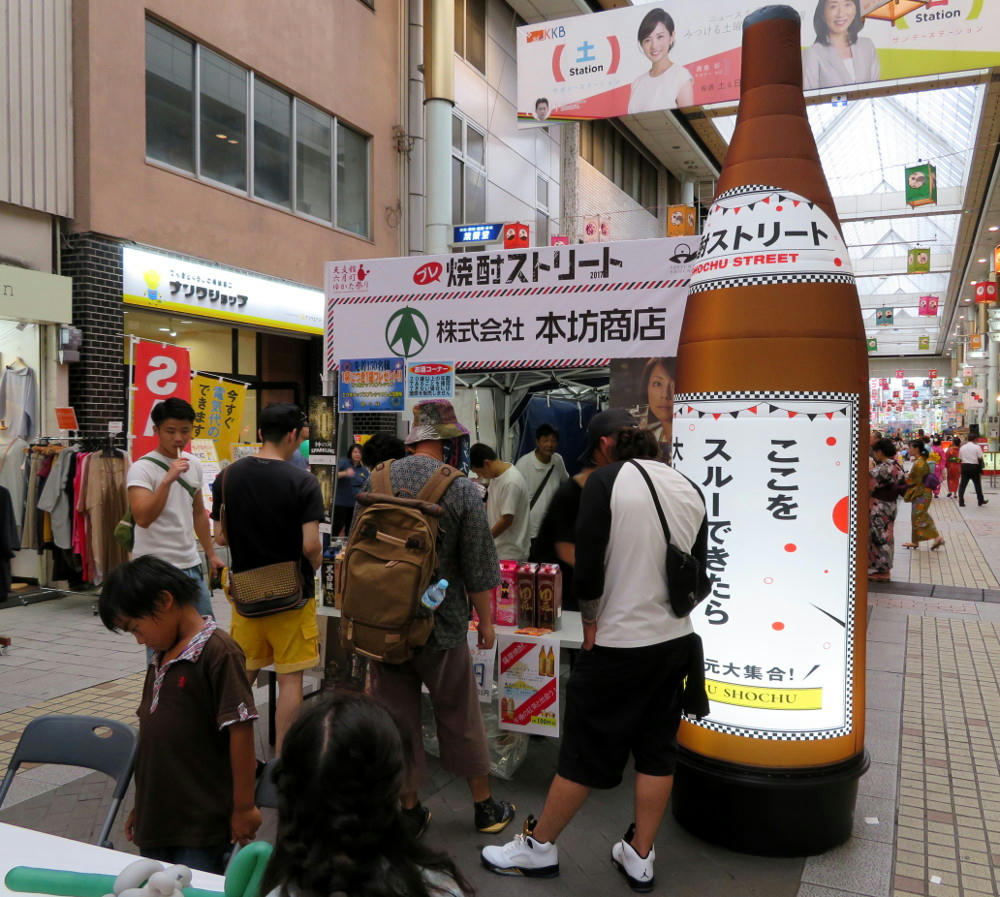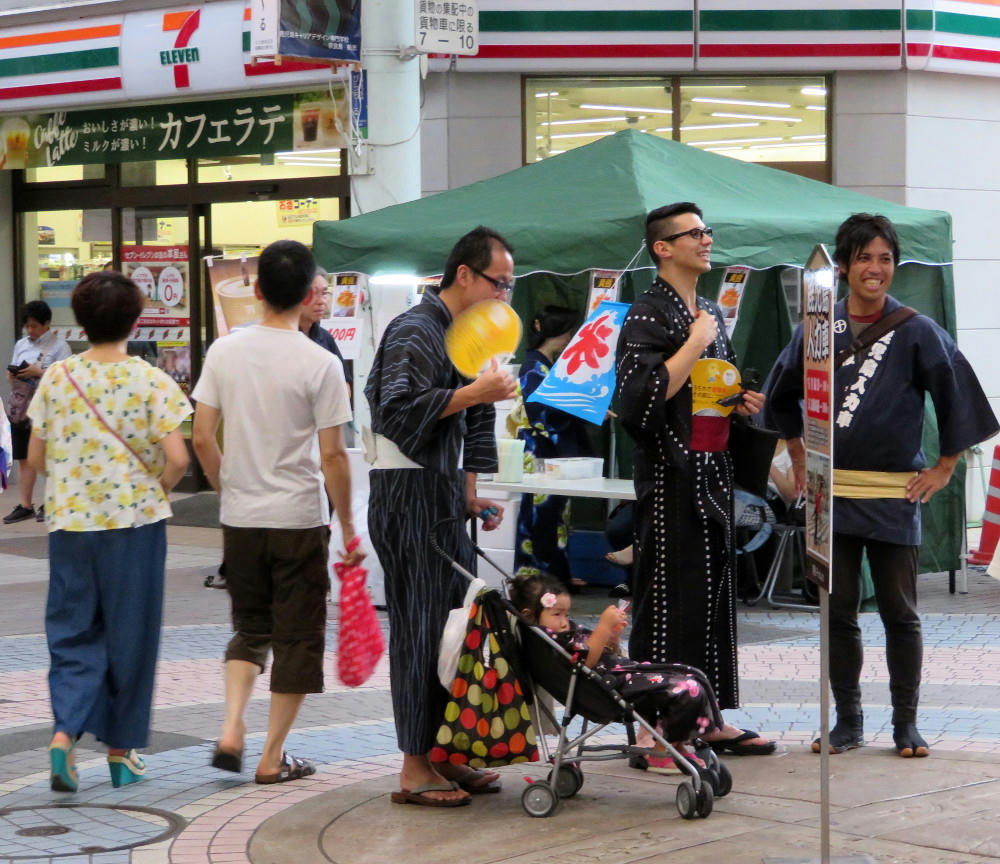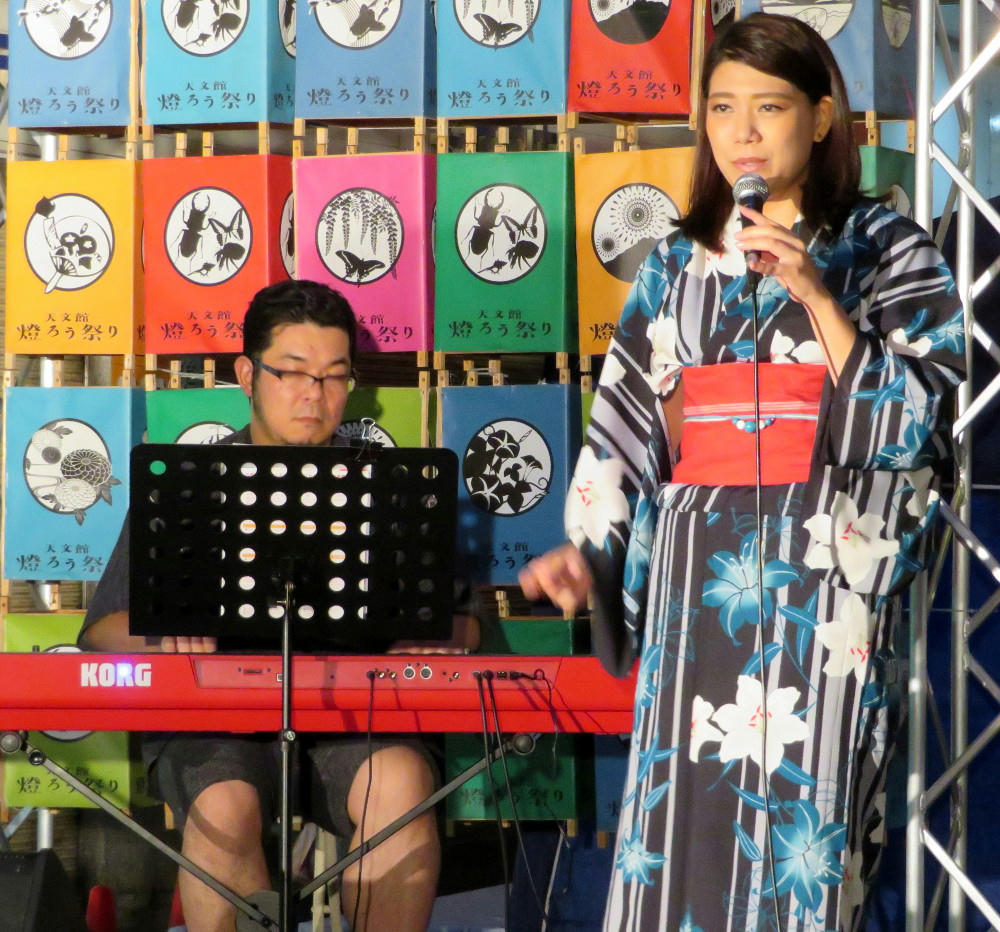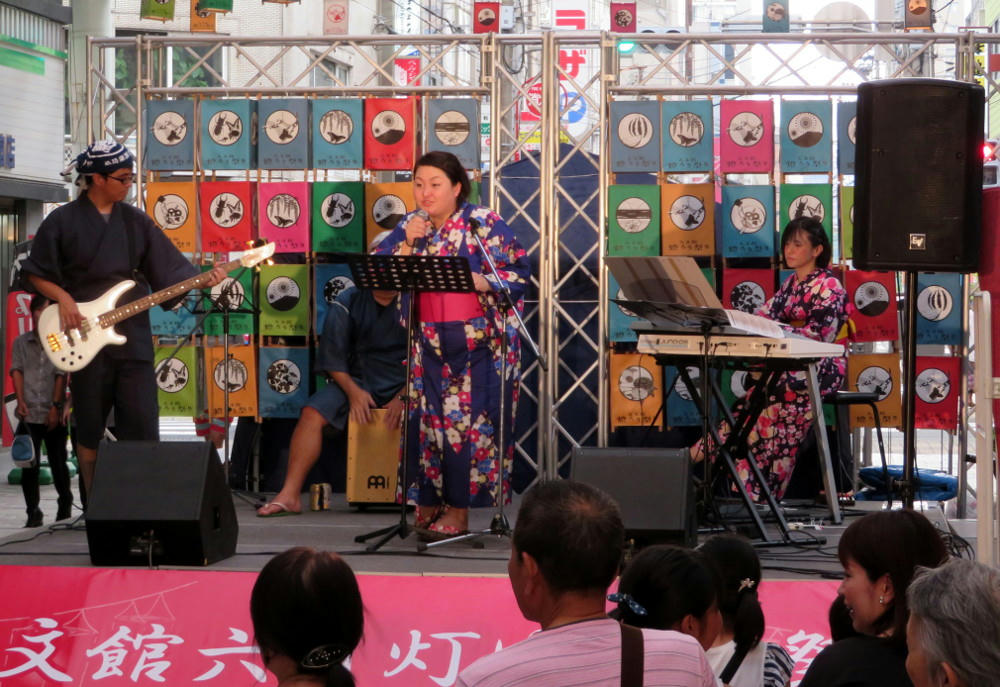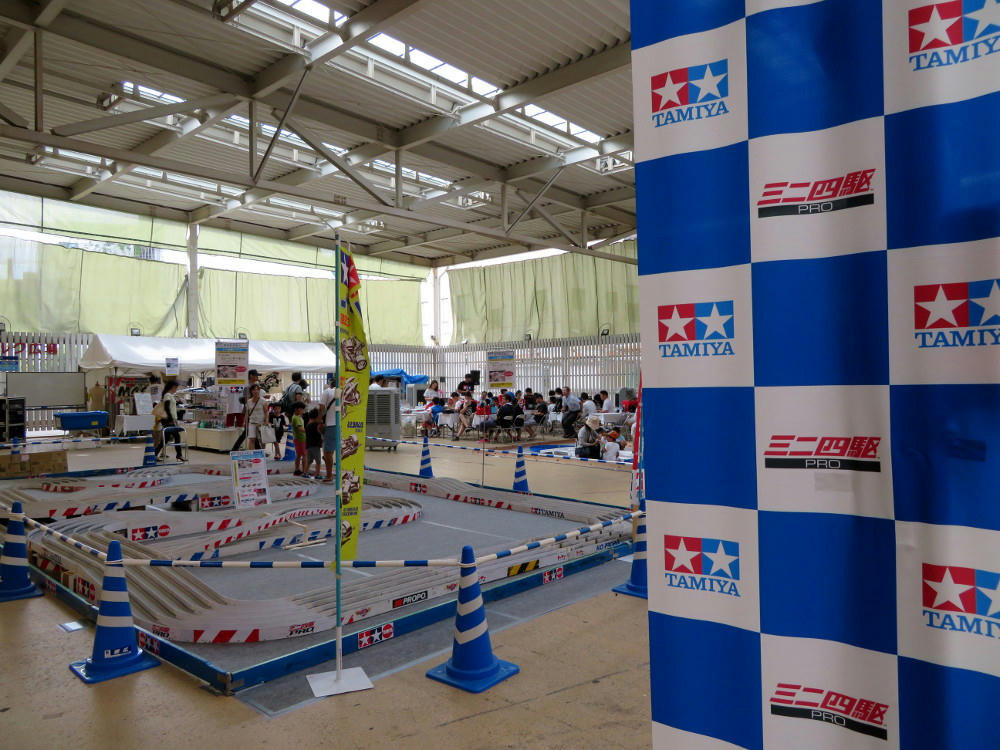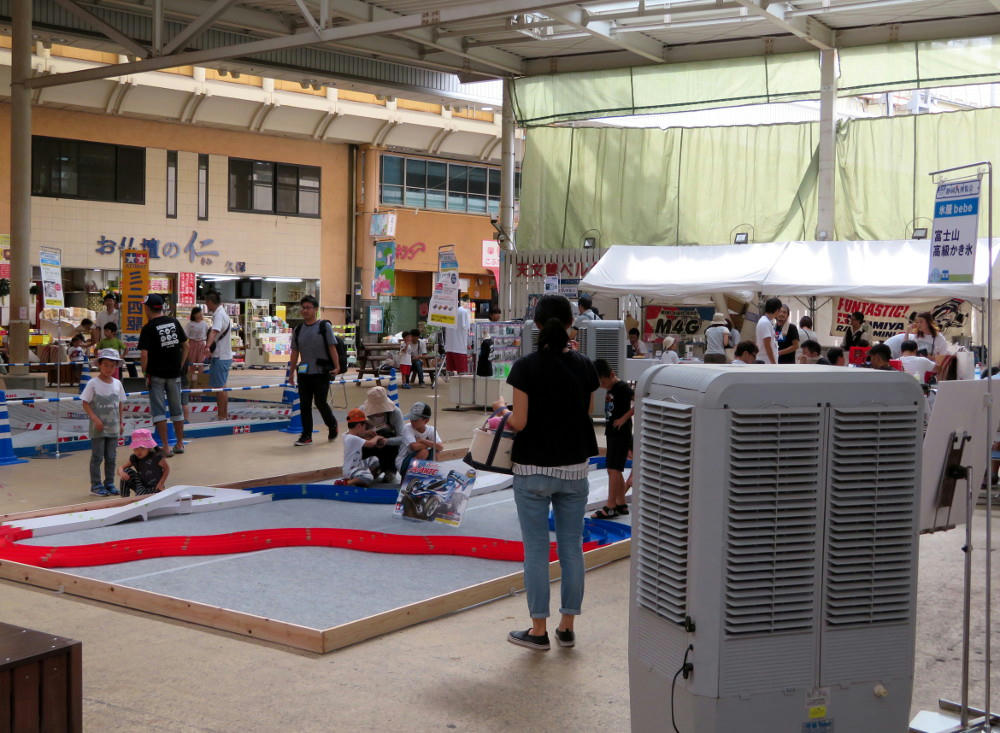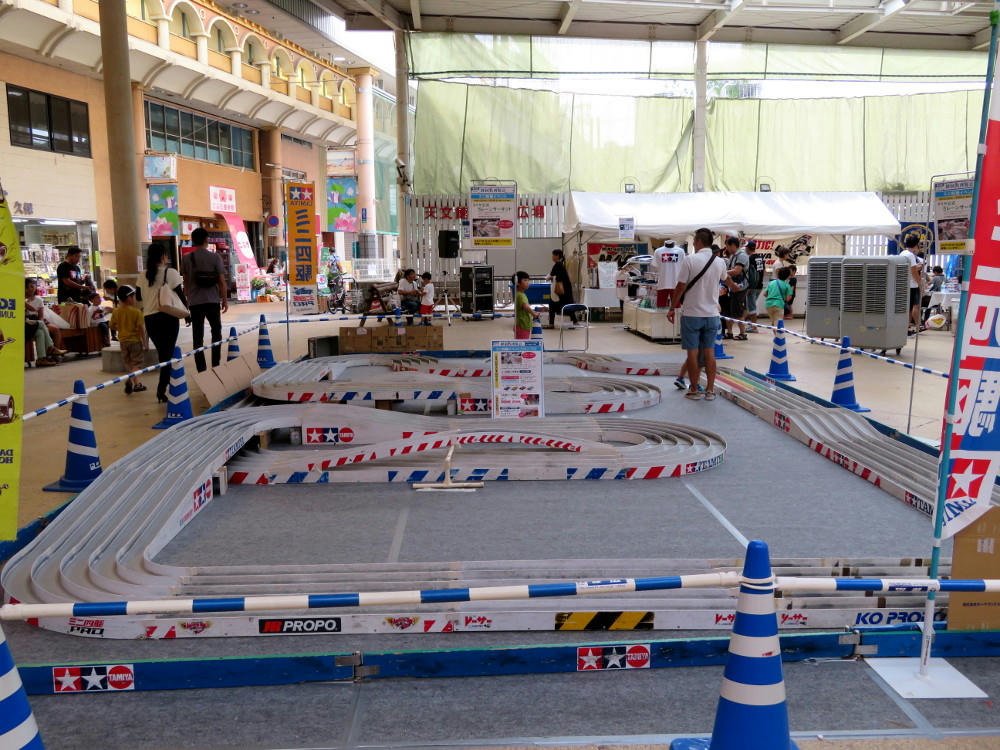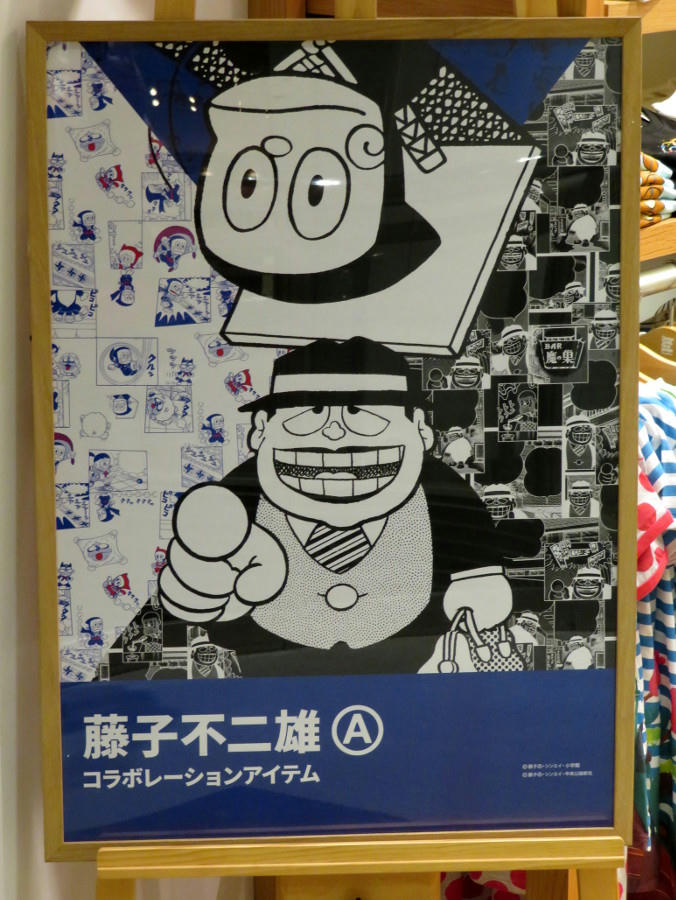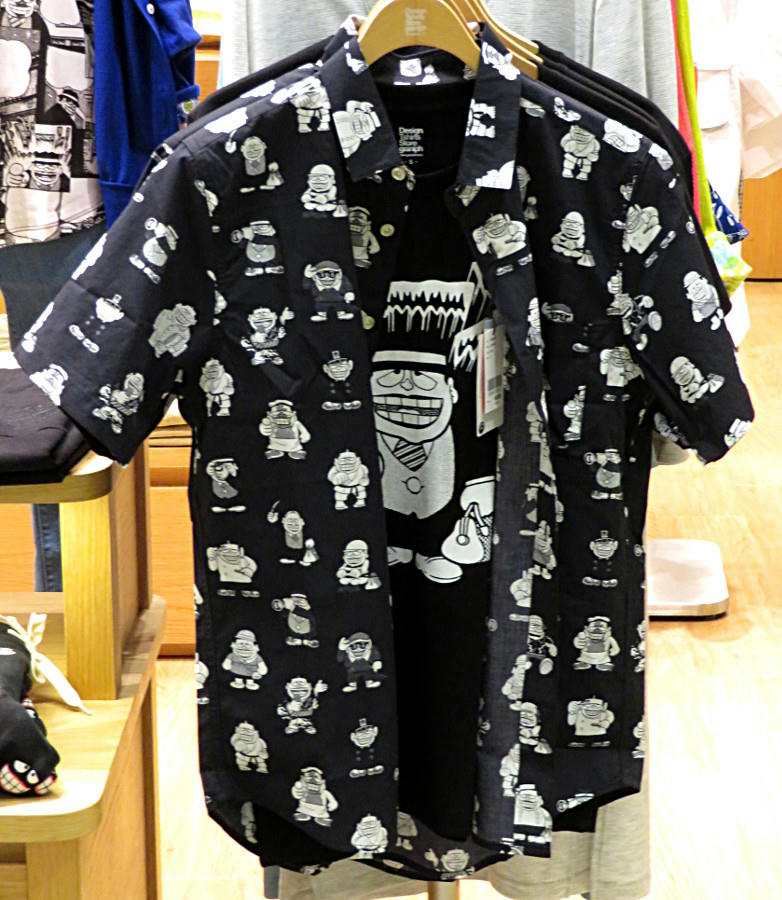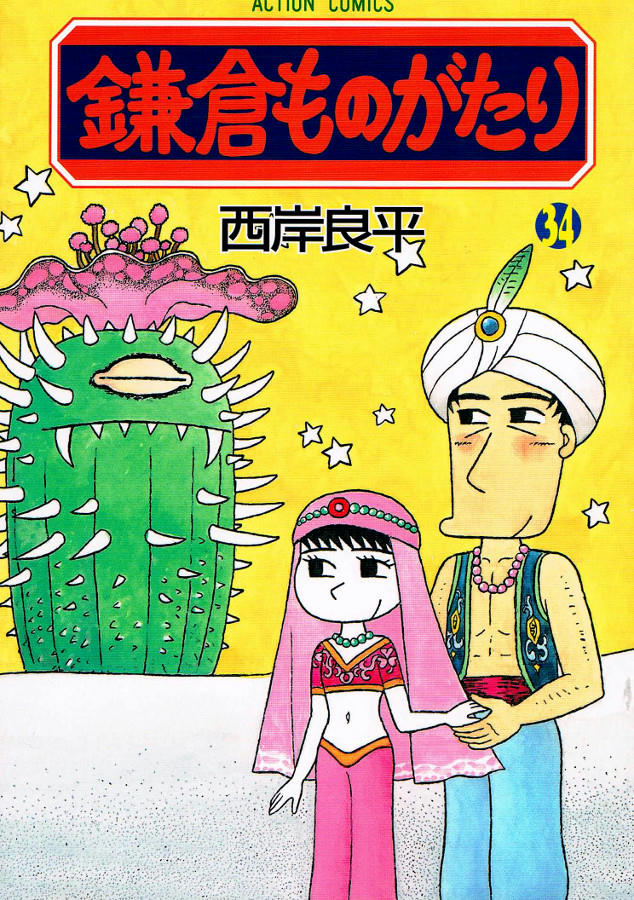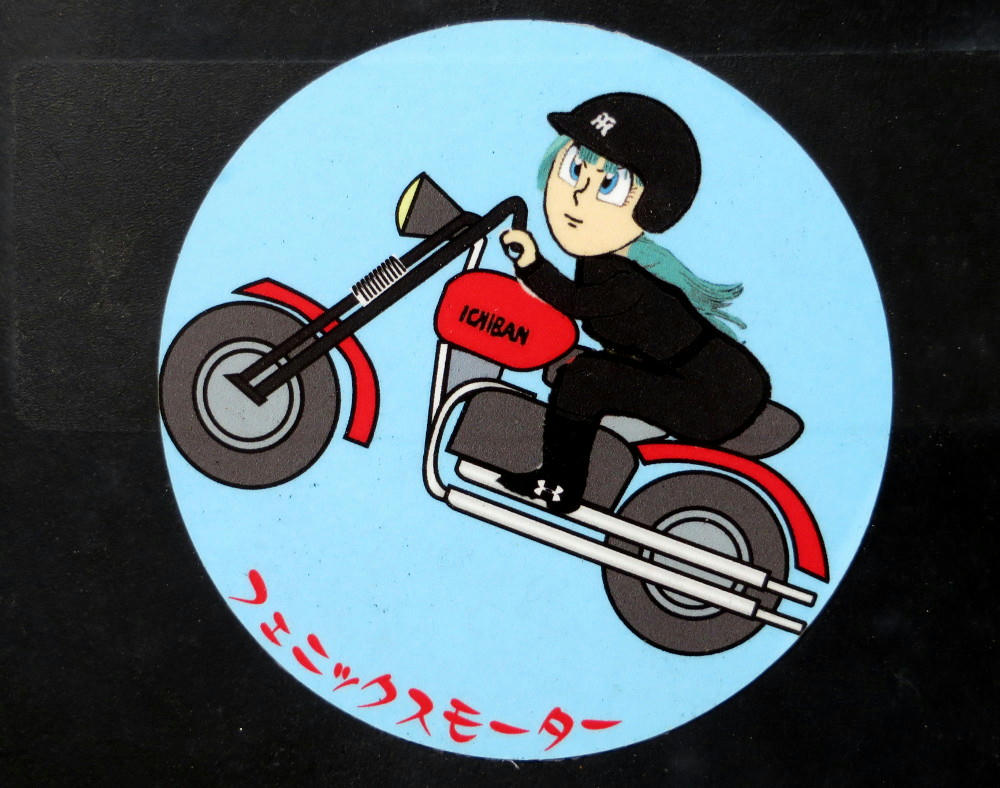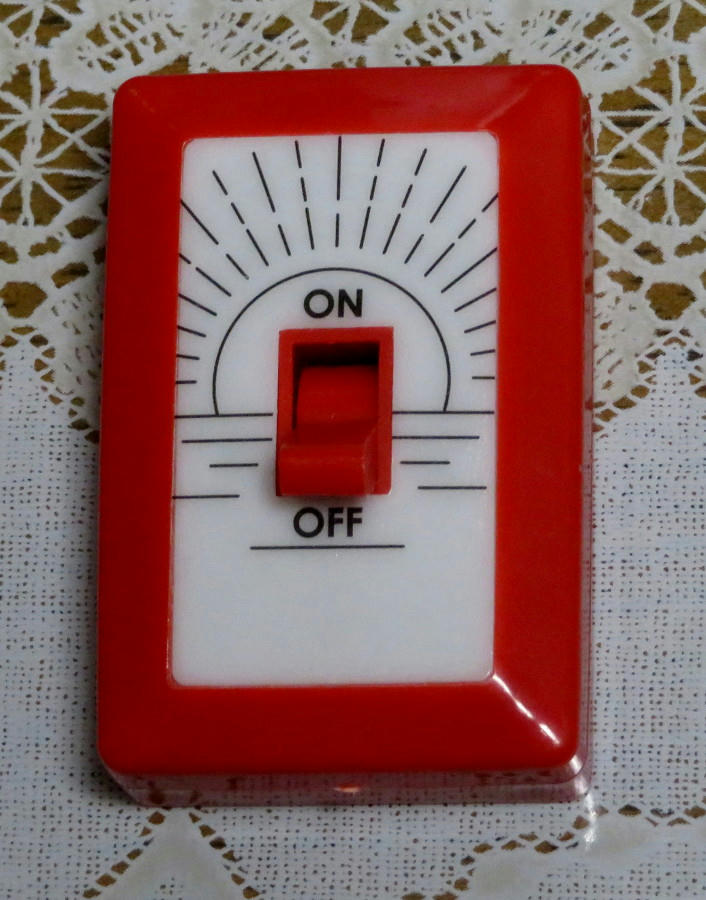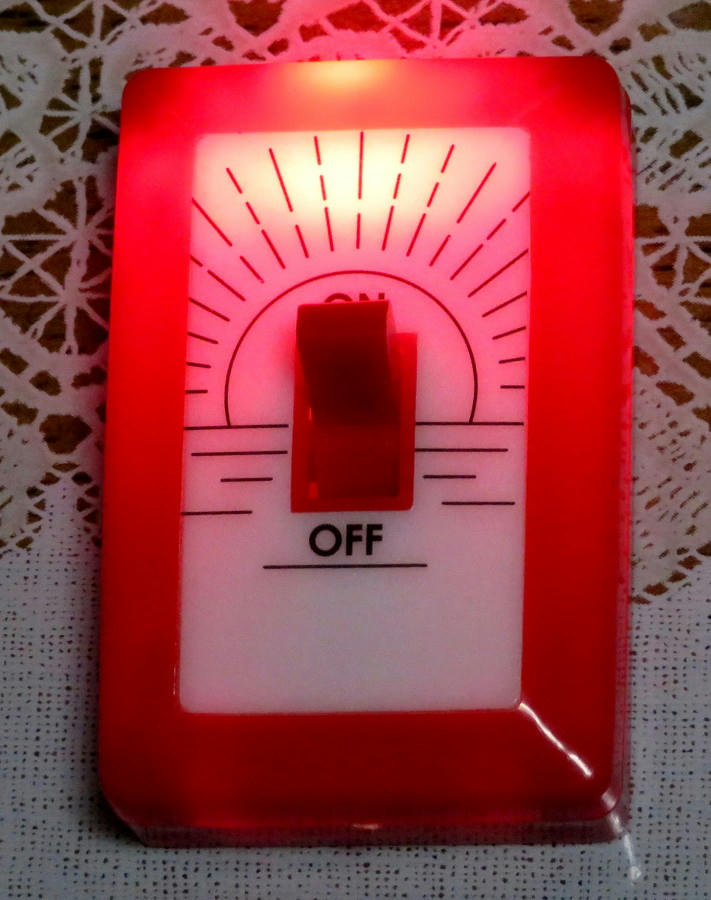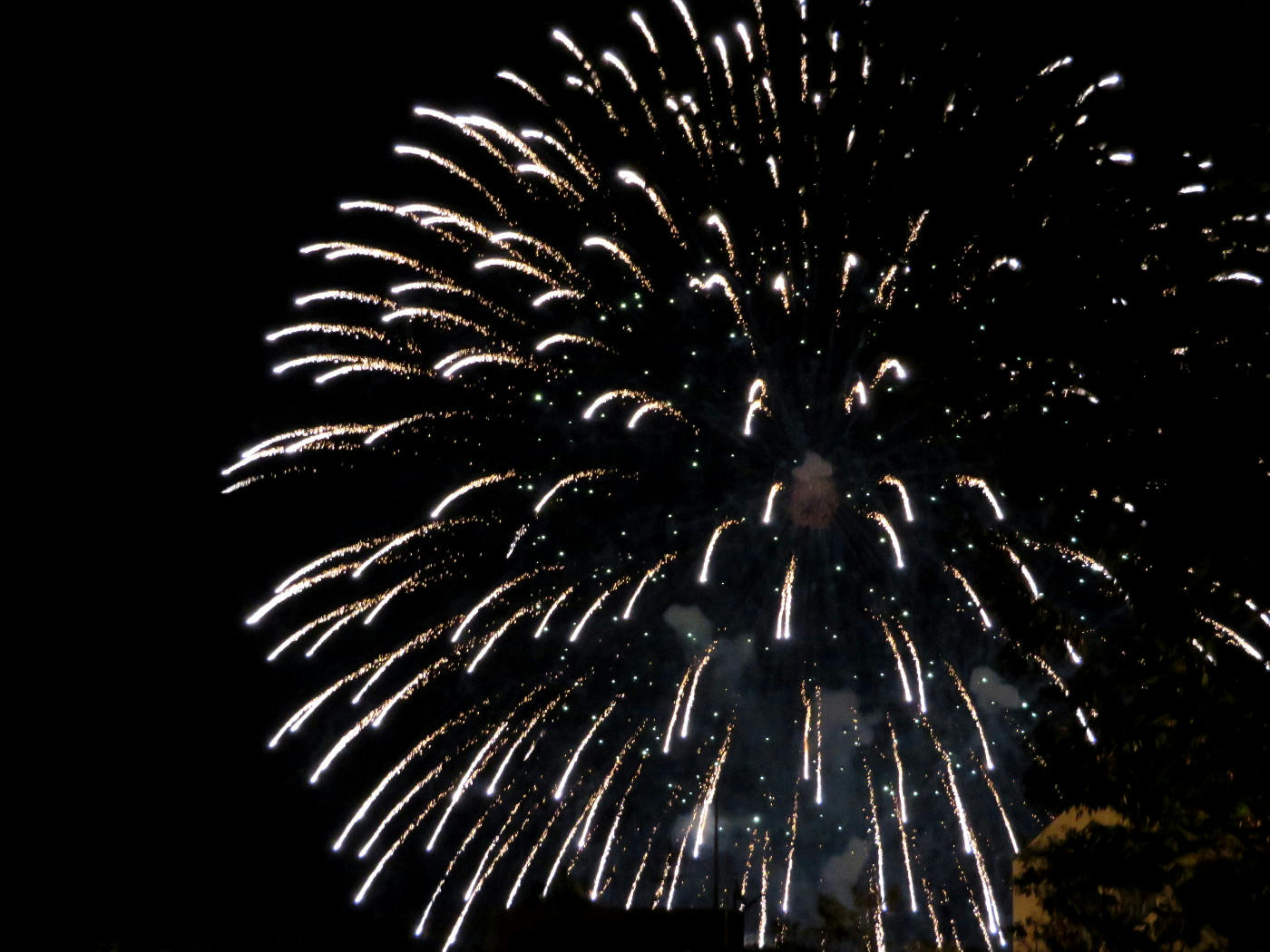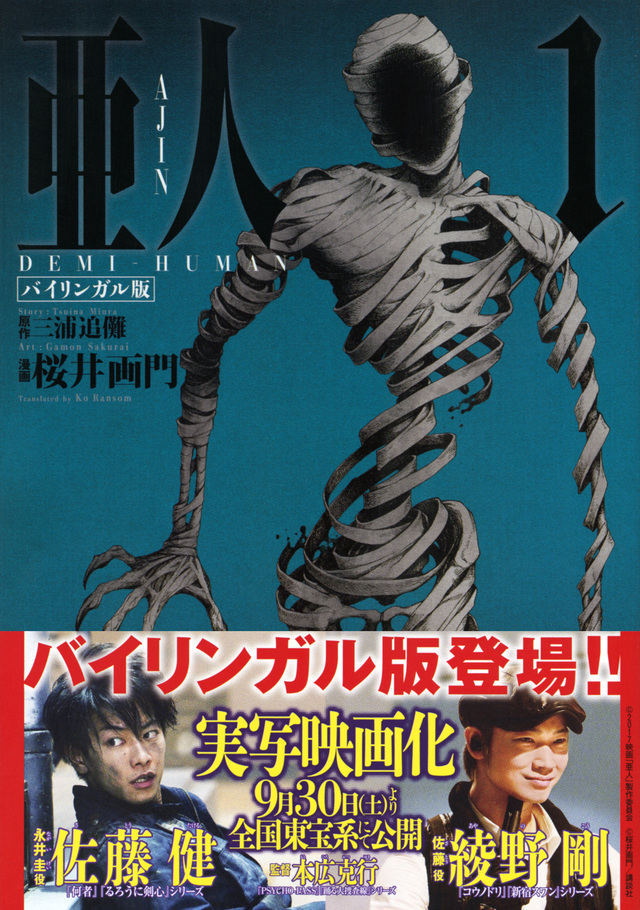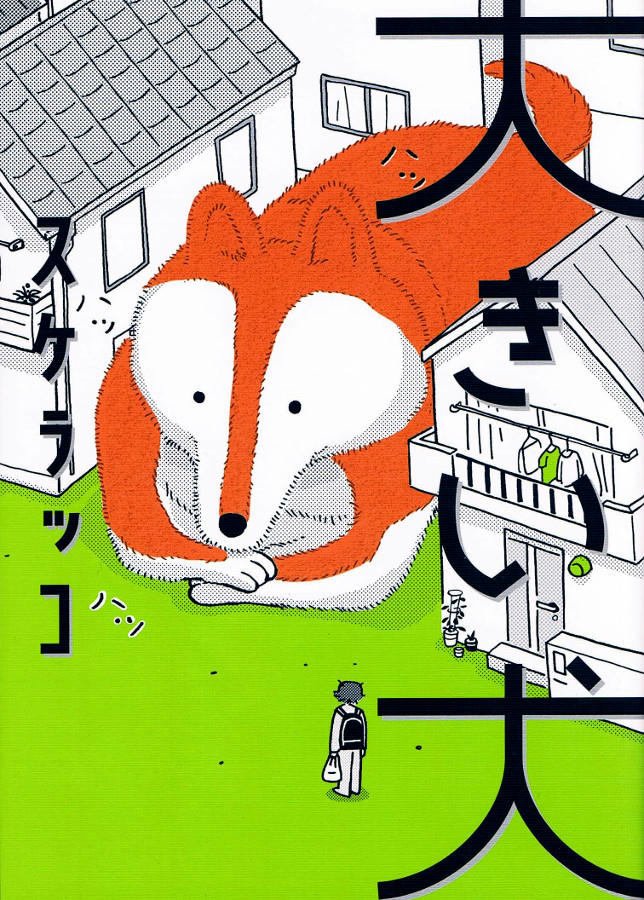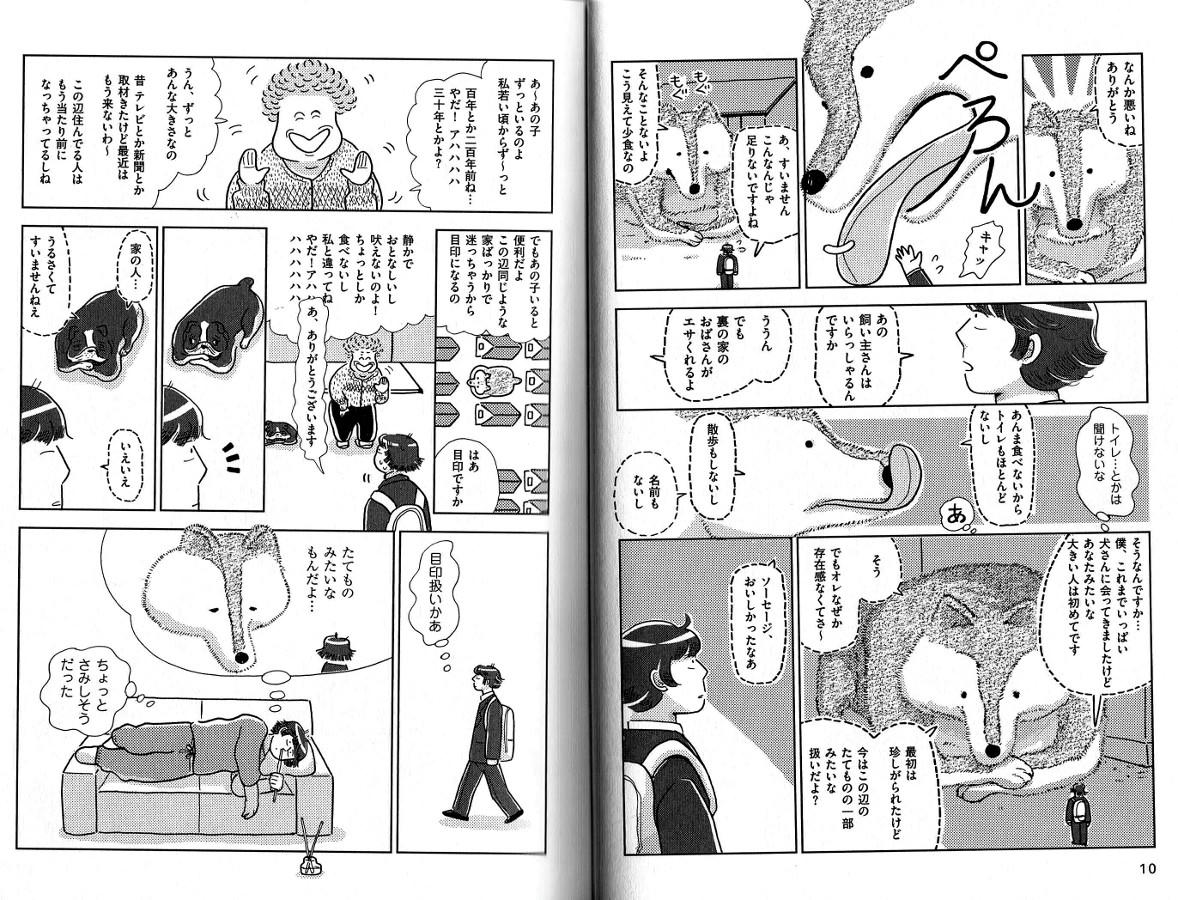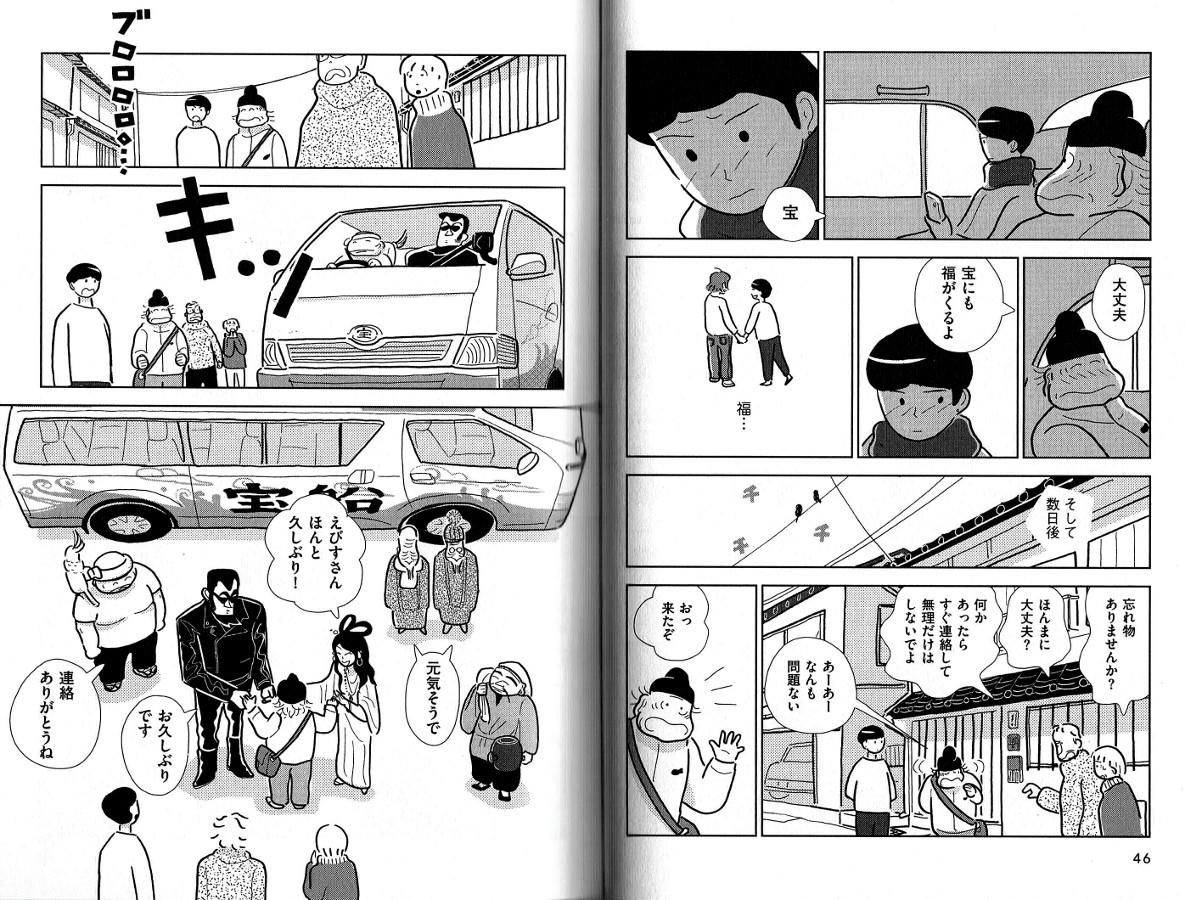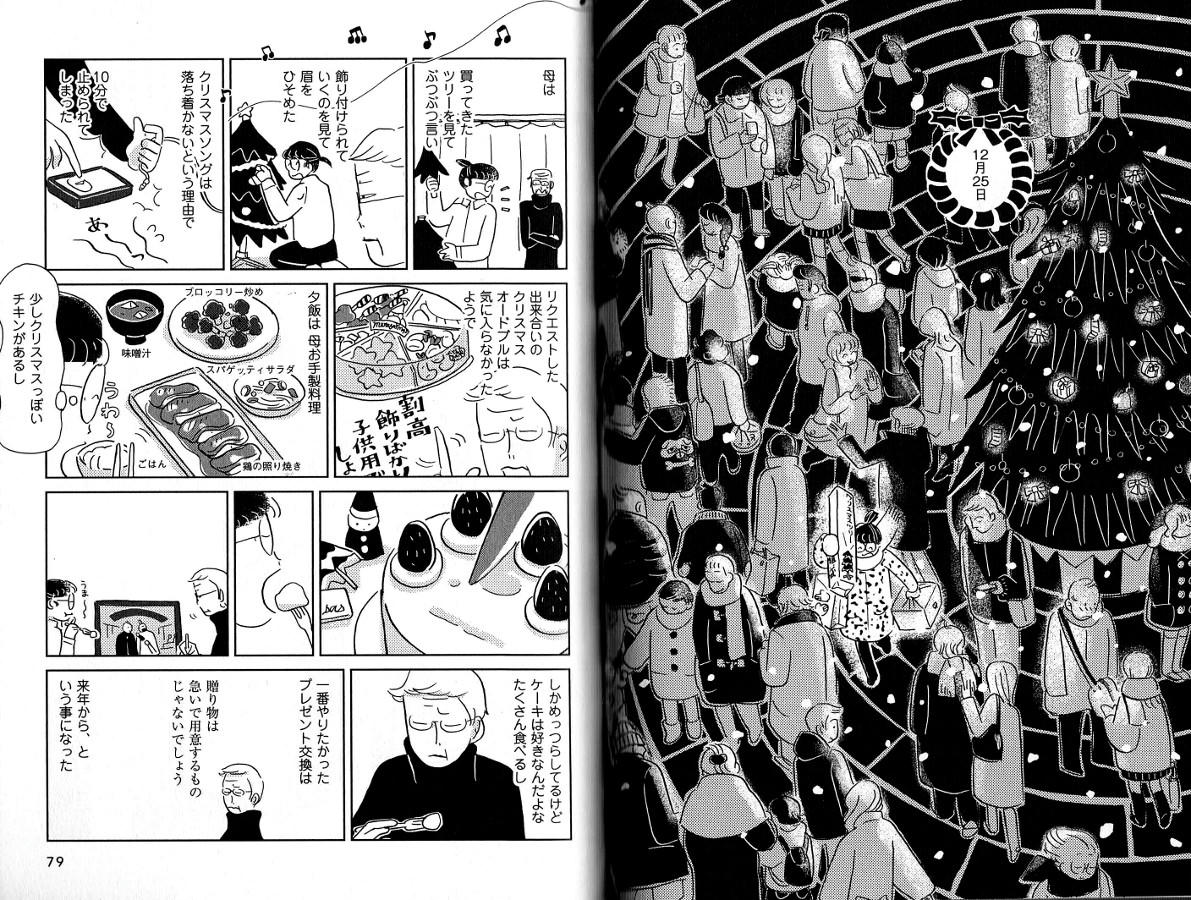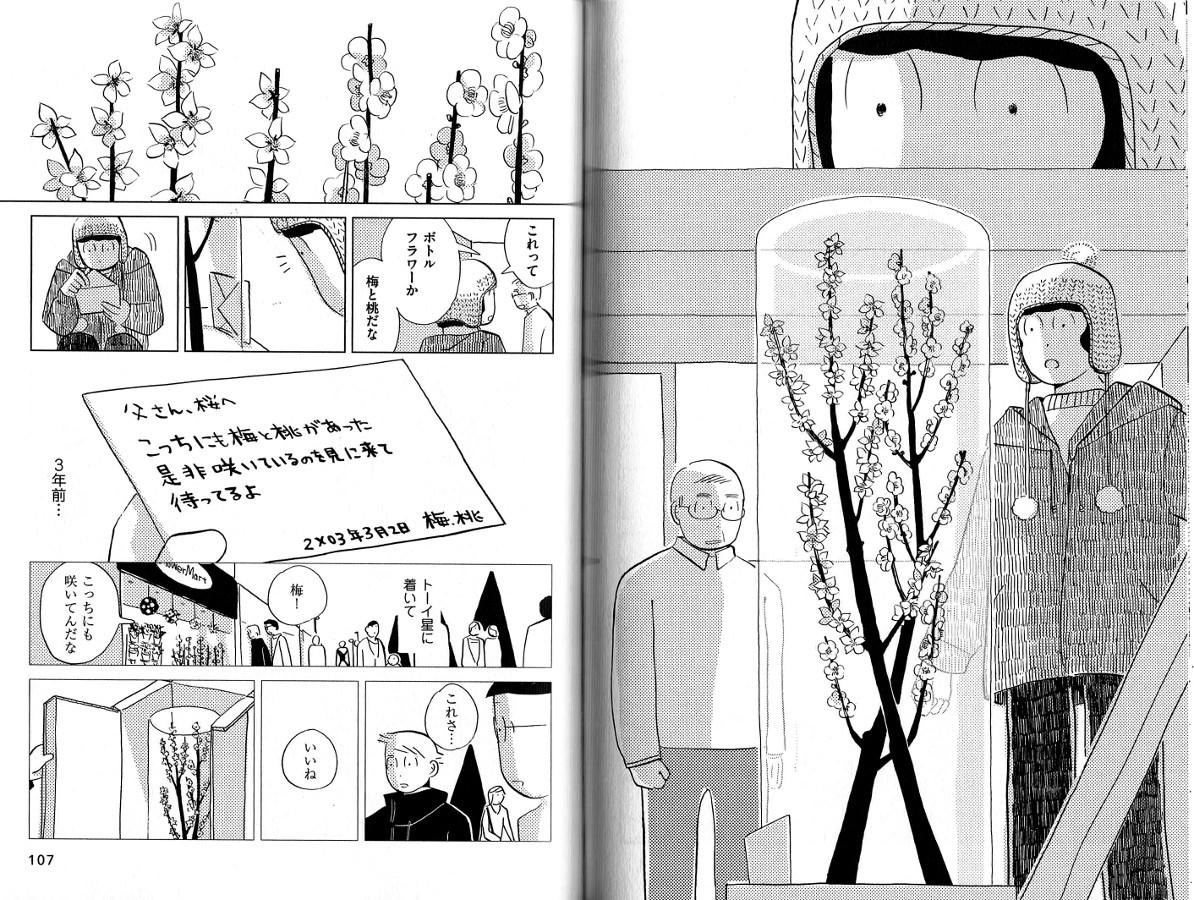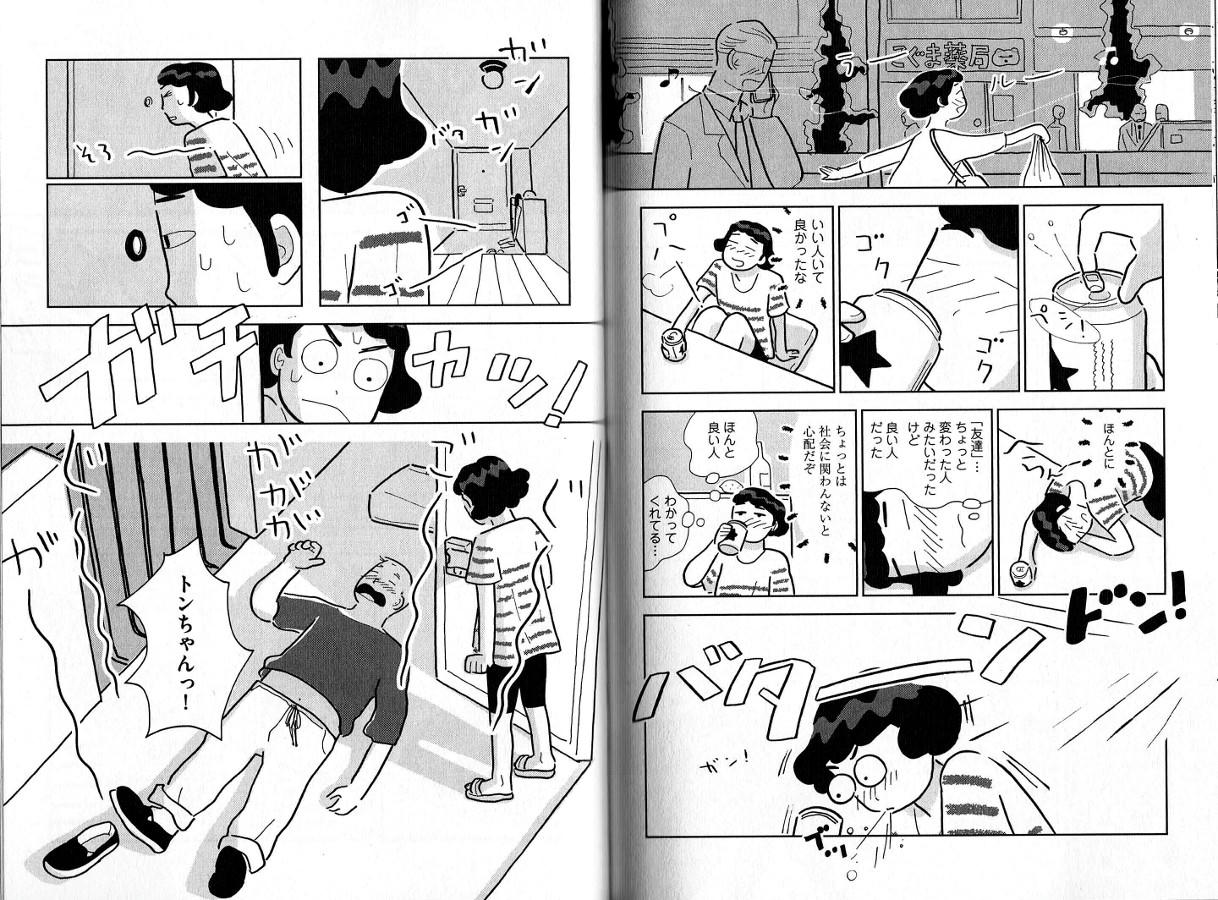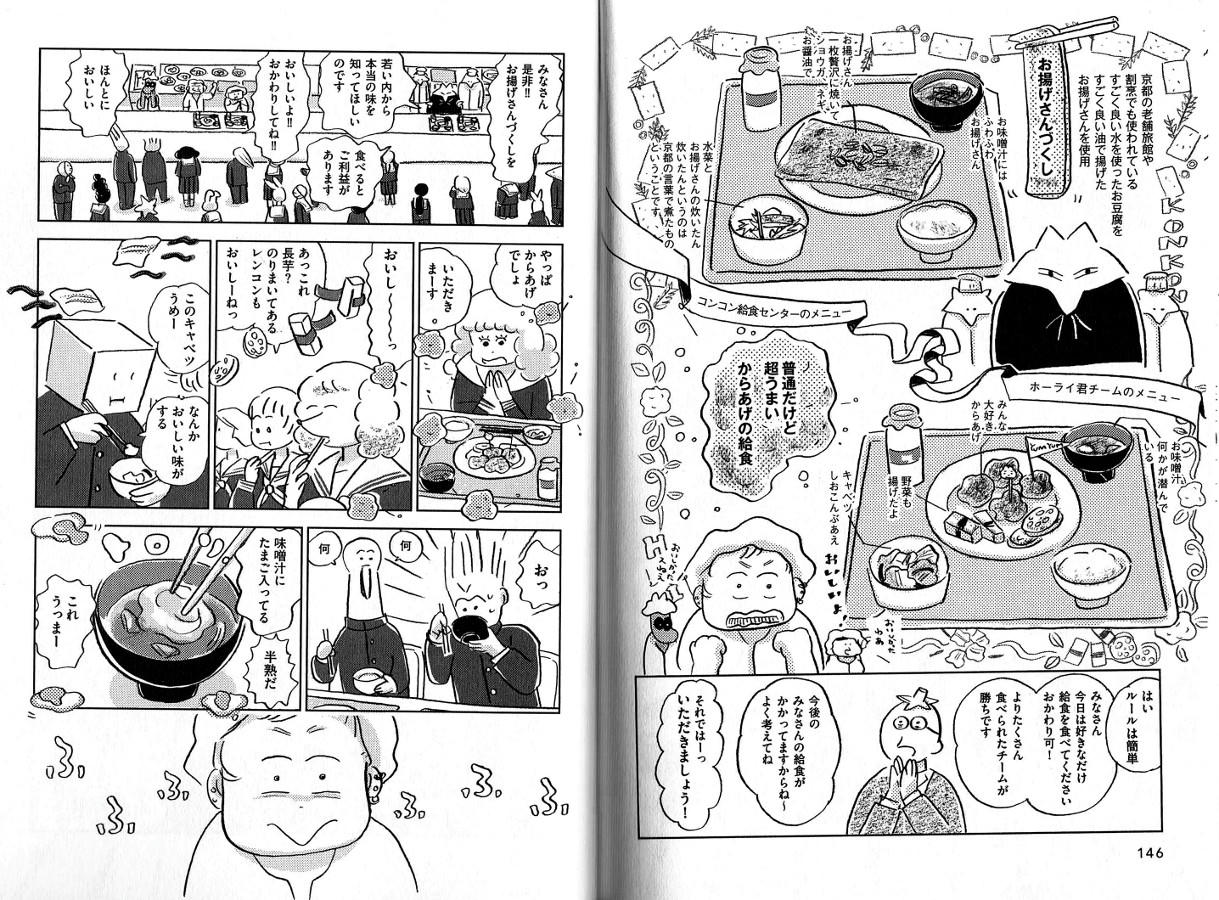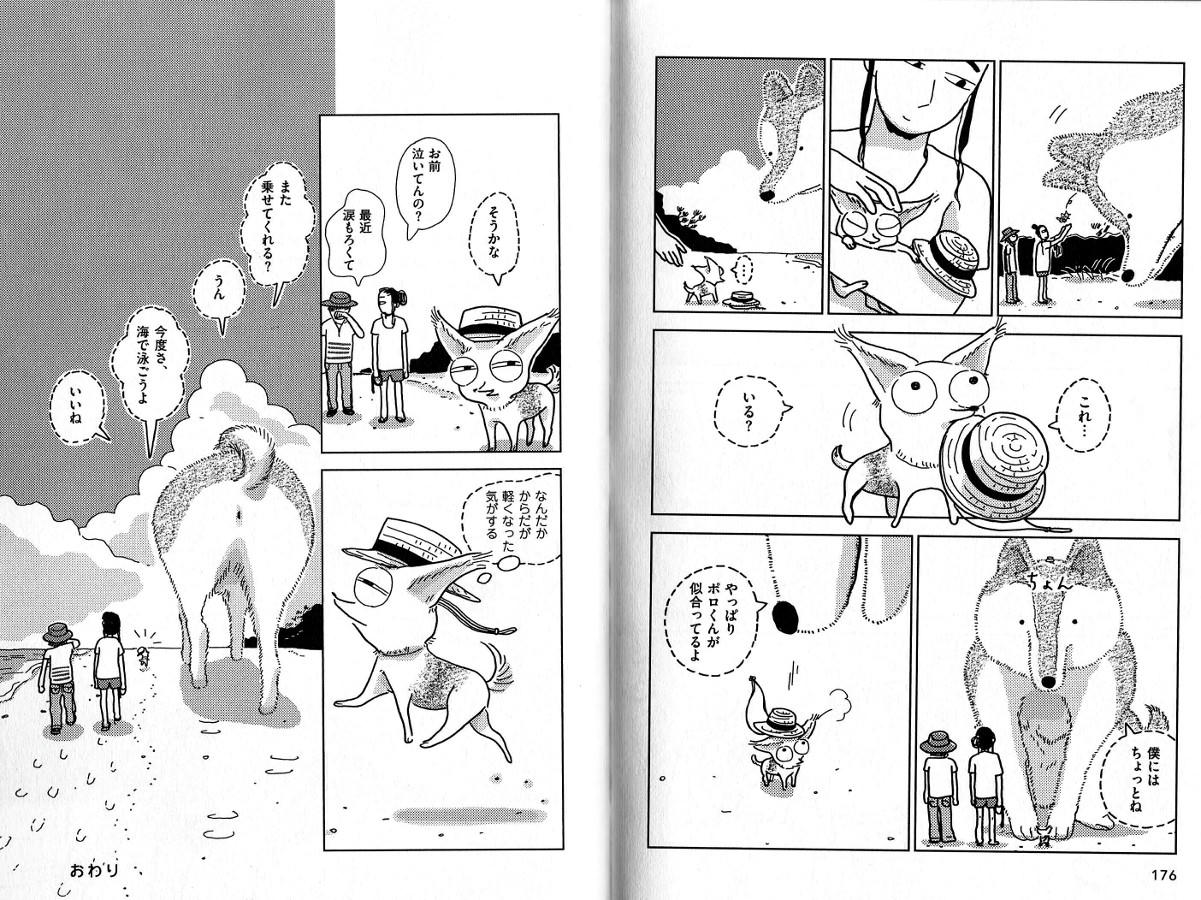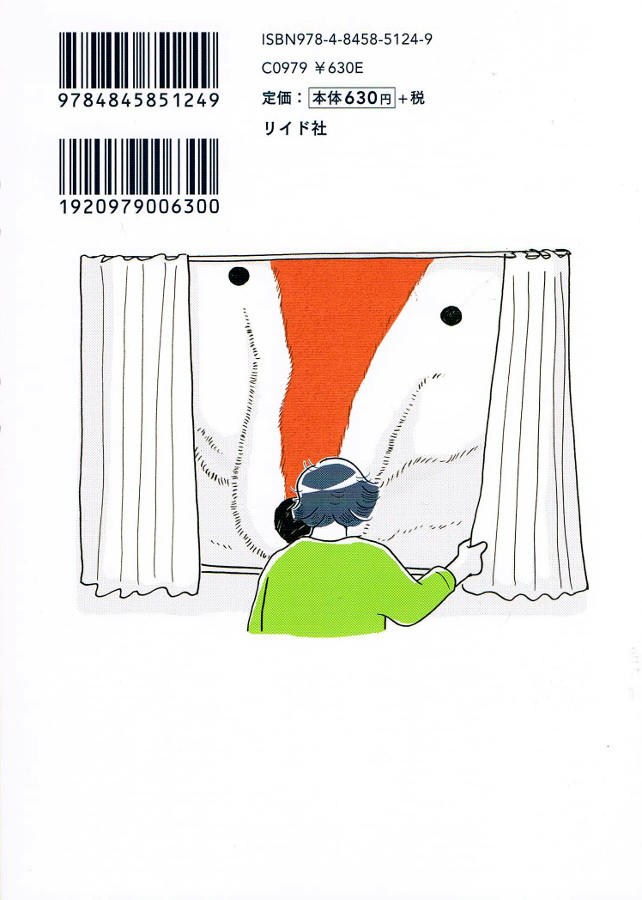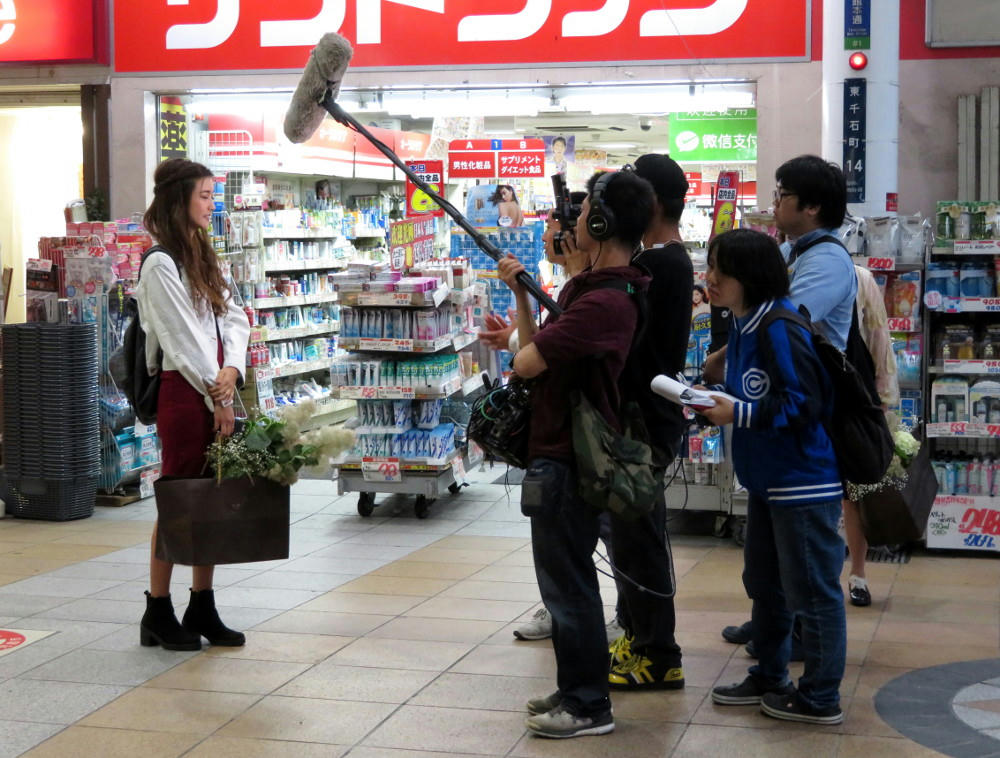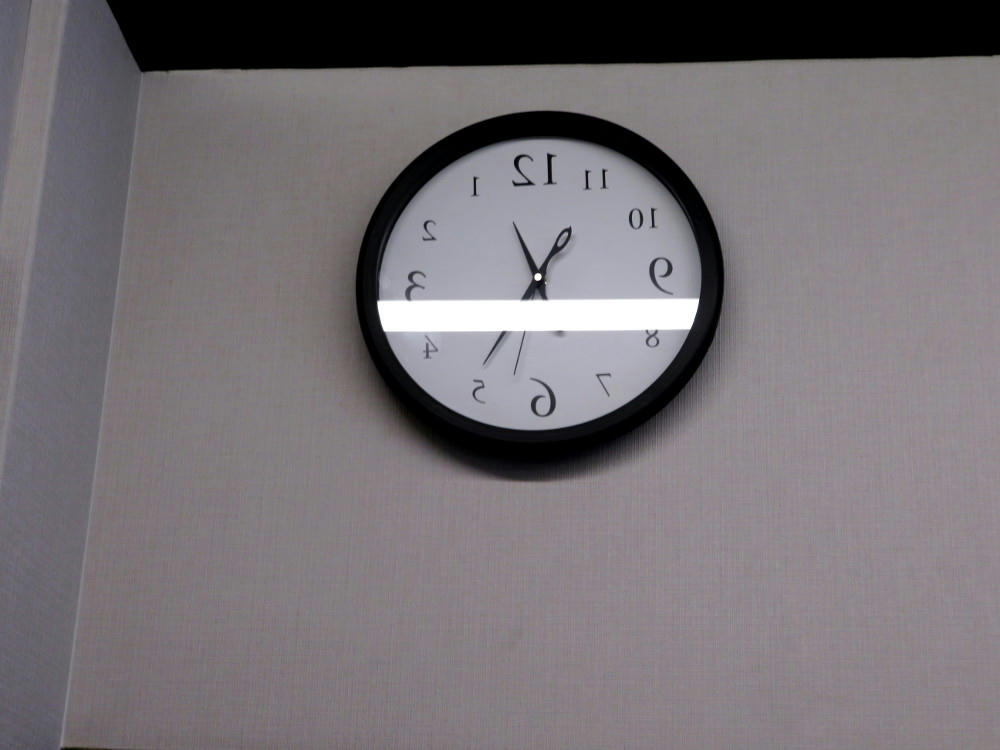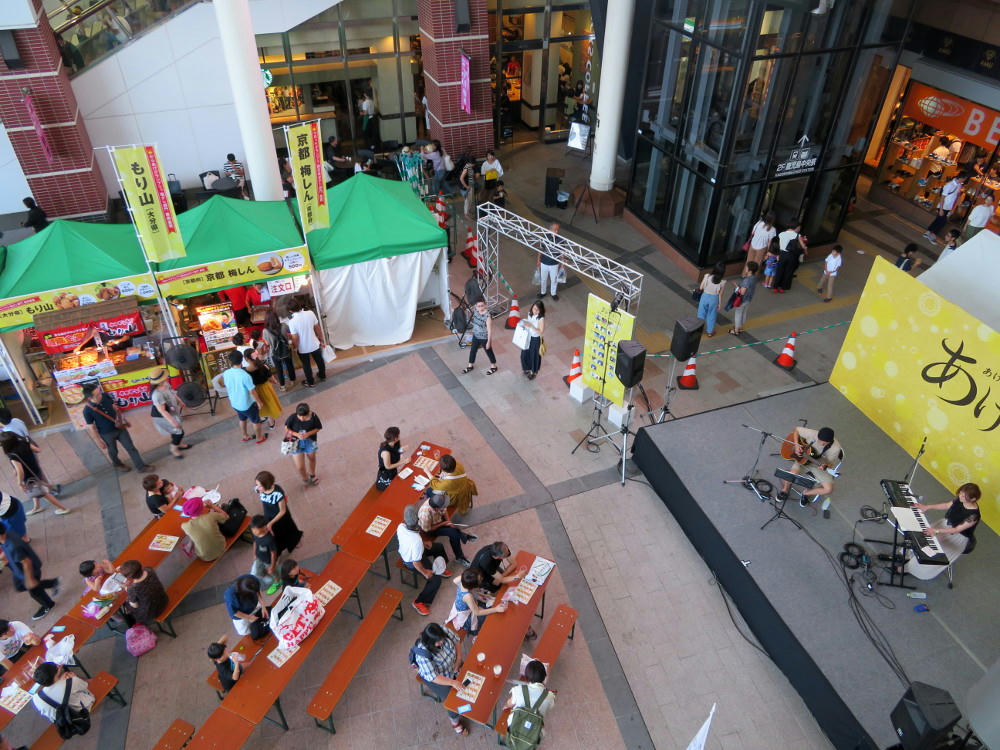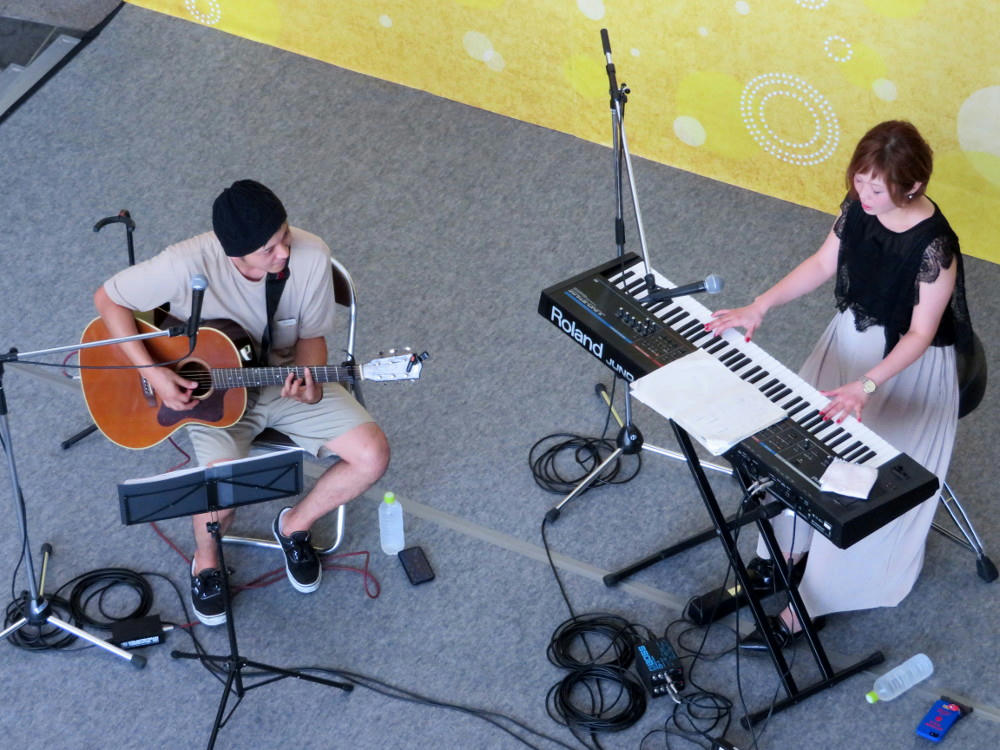(All rights belong to their owners. Images used here for review purposes only.)
Kamakura Monogatari, vol. 34, by Ryouhei Saigan, Grade: B+
Saigan has a pretty good list of titles to his name, dating back to 1975. His longest-running title may be
Kamakura Monogatari, which started in 1985, in
Manga Town magazine. I haven't read this one before, but I found myself in possession of vol. 34, and it was a pretty easy read. The main character is Isshiki Masakazu, a mystery writer that lives in the temple town of Kamakura, just 30 miles southwest of Tokyo. He occasionally works with the police to solve crimes that involve the supernatural. His wife is Akiko, a small 23-year-old woman sometimes mistaken for a school girl. The artwork is clean, but cartoony, as are the character designs. The stories involve monsters and the "other world," but can't be classified as particularly scary (instead, think "atmospheric"). The obi (paper wrapper) advertises a live-action TV series based on the manga.
The chapters in this volume are stand-alone stories, sometimes treated as "
Night Gallery"-like episodes where the only connecting thread is that Isshiki shows up in the last panel as a friend or acquaintance of that chapter's protagonist. Which can be confusing if you're picking up the books in the middle of the series.
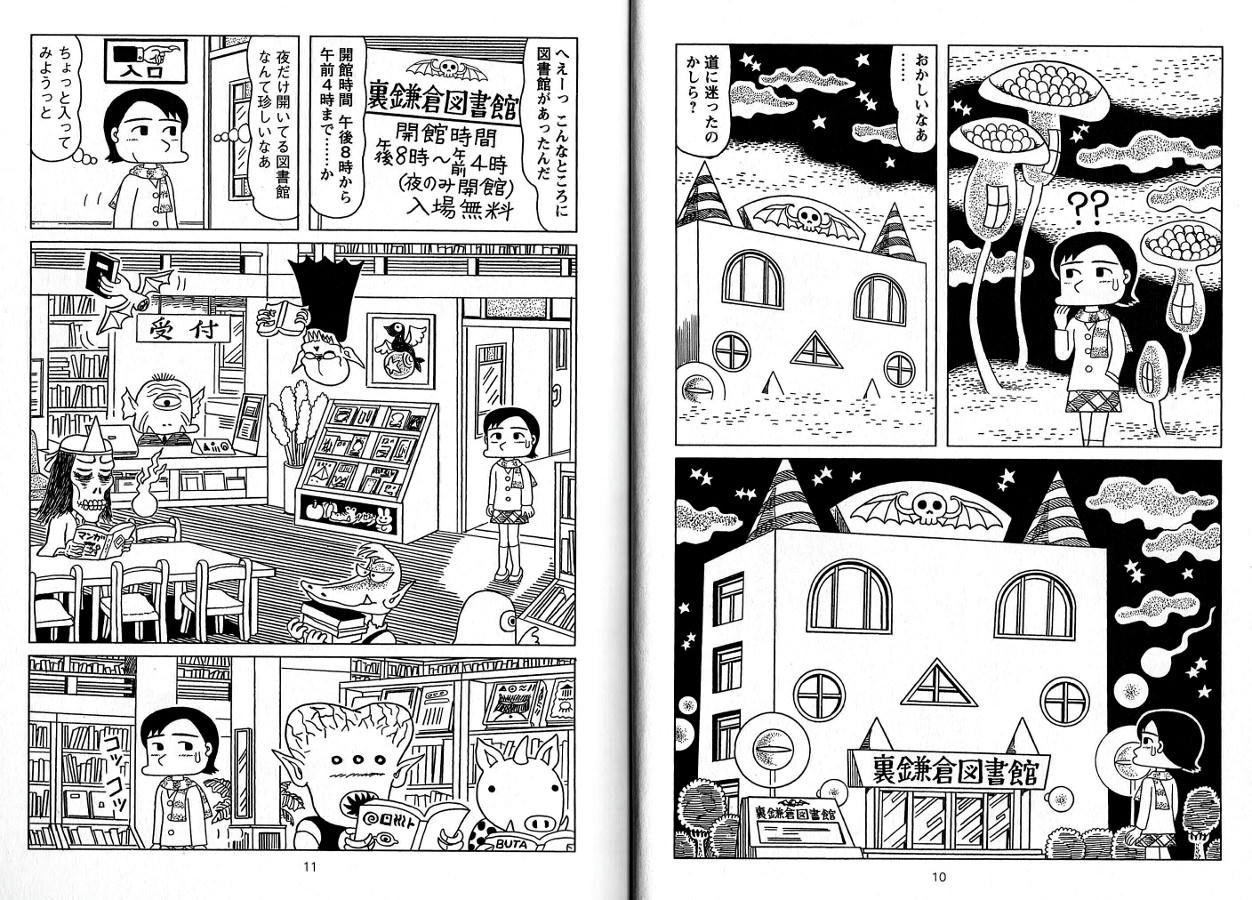
(Kana discovers the yokai library.)
Yoru no Toshokan (The Night Library)
Kana is a high school girl staying with her aunt following the deaths of her parents and younger sister in a house fire. The aunt owns a bar, and the noise at night gets in the way of Kana's school studies. One evening, she decides to take a break and go to a konbini (convenience store) but along the way she gets lost and stumbles across a yokai library. In the library is a former classmate who died 6 years earlier, and is now spending his time learning the yokai language. The library head notices that they have a living human guest, and he gives her a member's card that lets her come back any night she wants. The next few nights, she leaves to study outside, and discovers that the yokai newspapers at the library carry ongoing human world news stories, including the names and photos of the criminals, and other details unknown to regular humans. One of the stories is about a serial killer that's been attacking female bar owners, and the villain identified in the paper is one of the customers at Kana's aunt's bar. Kana returns home just in time to catch the killer threatening her aunt, and he decides to go after Kana instead. That's when the auto-defense mechanism built into the library card triggers, stunning the bad guy long enough for the police to arrive. The next night, Kana returns to the library and checks the paper for the night of the house fire, and finally learns that it was not caused by her father, like the human news reported, but by a faulty power adapter. She vows to live life for all four of the family, graduates from college, and opens her own library, of which Isshiki is a patron
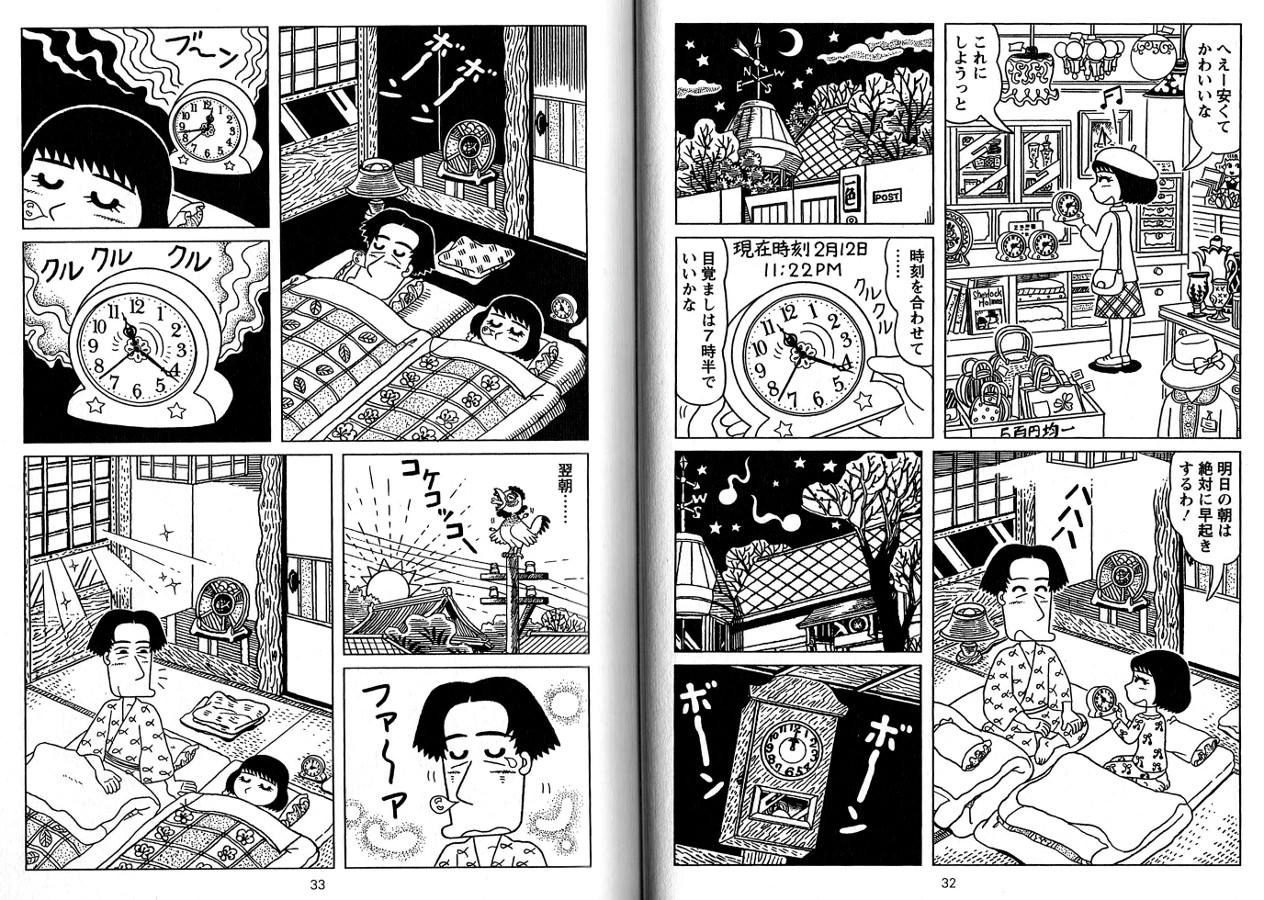
(Akiko buys herself a new alarm clock, and still oversleeps.)
Shunmin (Deep Sleep)
Akiko has a problem with oversleeping, so she goes to an outlet store to buy an alarm clock. She sets the alarm that night, and still doesn't wake up early the next morning. In fact, she doesn't wake up at all. Isshiki takes her to a hospital, where the doctor can't find anything wrong with her, other than that her breathing is shallow and her body temperature has dropped. Isshiki learns that another patient, a boy, has been admitted with the same symptoms, and his mother says that it happened right after she'd bought an alarm clock from the same store. Isshiki checks the back of the clock, but can't read the yokai lettering on the instructions label. He takes Akiko's clock to a friend, who translates the label for him, and it turns out the clocks are for hibernating animals. The numerals on the face aren't for minutes and hours, but for days and months. Isshiki moves the alarm hand backward, the bell rings, and Akiko wakes up refreshed. No one knows how the outlet store got the clocks, but NASA buys them up for its deep space exploration ships.
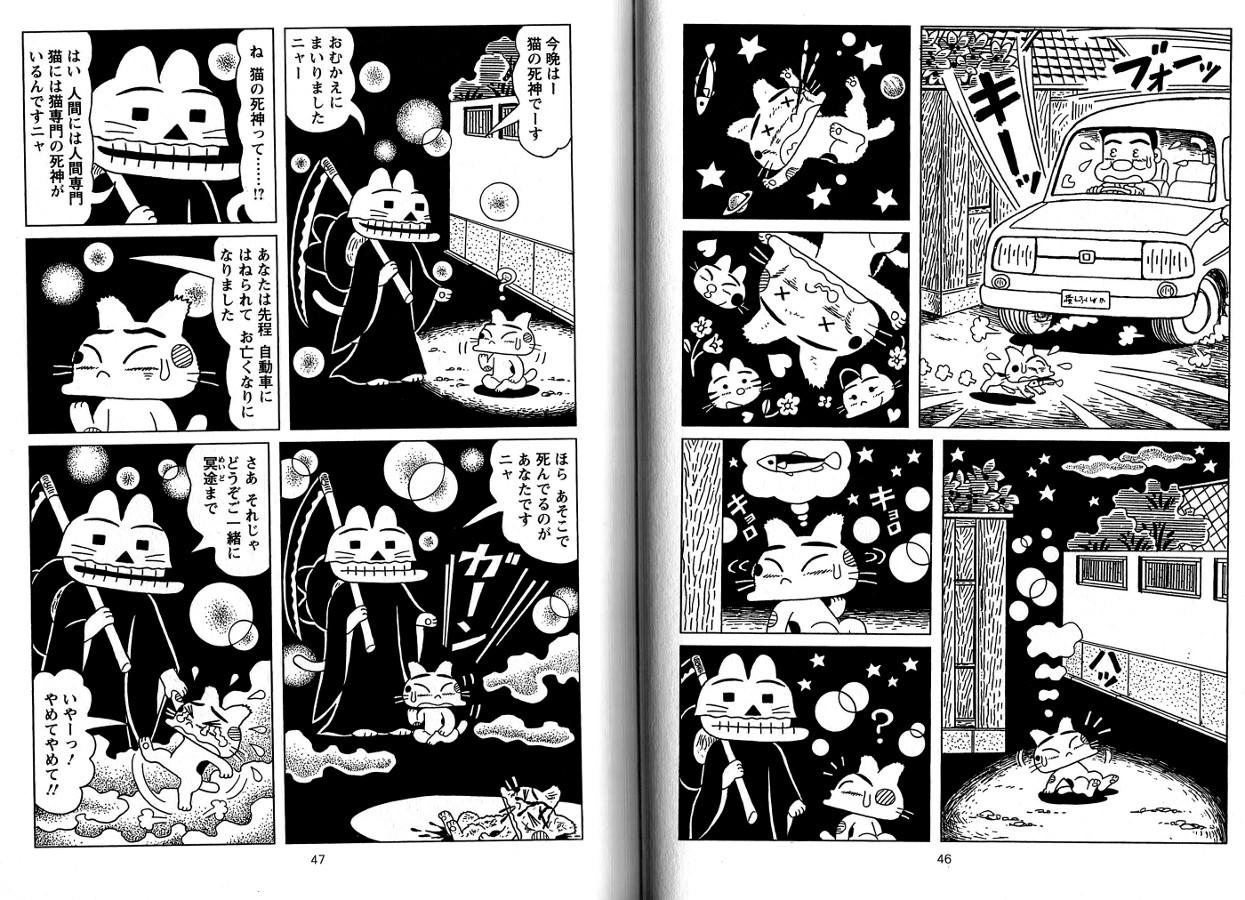
(The mother cat dies and is visited by the cat version of the grim reaper.)
Makai Tenshuu II (Demon World Reincarnation II)
A mother cat is starving and unable to care for her 3 malnourished kittens. She tries to catch a mouse for them, but fails and is hit and killed by a car. She's visited by a cat grim reaper, and refuses to go to the afterlife. The cat reaper relents and allows her to turn into a monster spirit to look over her kittens. Unfortunately, when she returns to the house, her brood is gone, presumably eaten by a dog. In despair, she haunts a forest where she happens upon a human baby that had been abandoned by its mother. She cares for the baby for one year, until a dog monster spirit arrives and tries to eat it. She fights the larger monster off, and it gracefully admits defeat and leaves. Sometime later, two men come into the woods with a search pig, and they locate the cave with the baby and take it back to human society. The cat spirit is relieved that the baby will be safe now, but sad at being alone again. At that moment, she's visited by a cat Buddha that rewards her by showing that her kittens had been found by a human couple and they are now healthy and living well. The mother cat then spends the rest of her time sleeping peacefully in a sunny part of the woods.
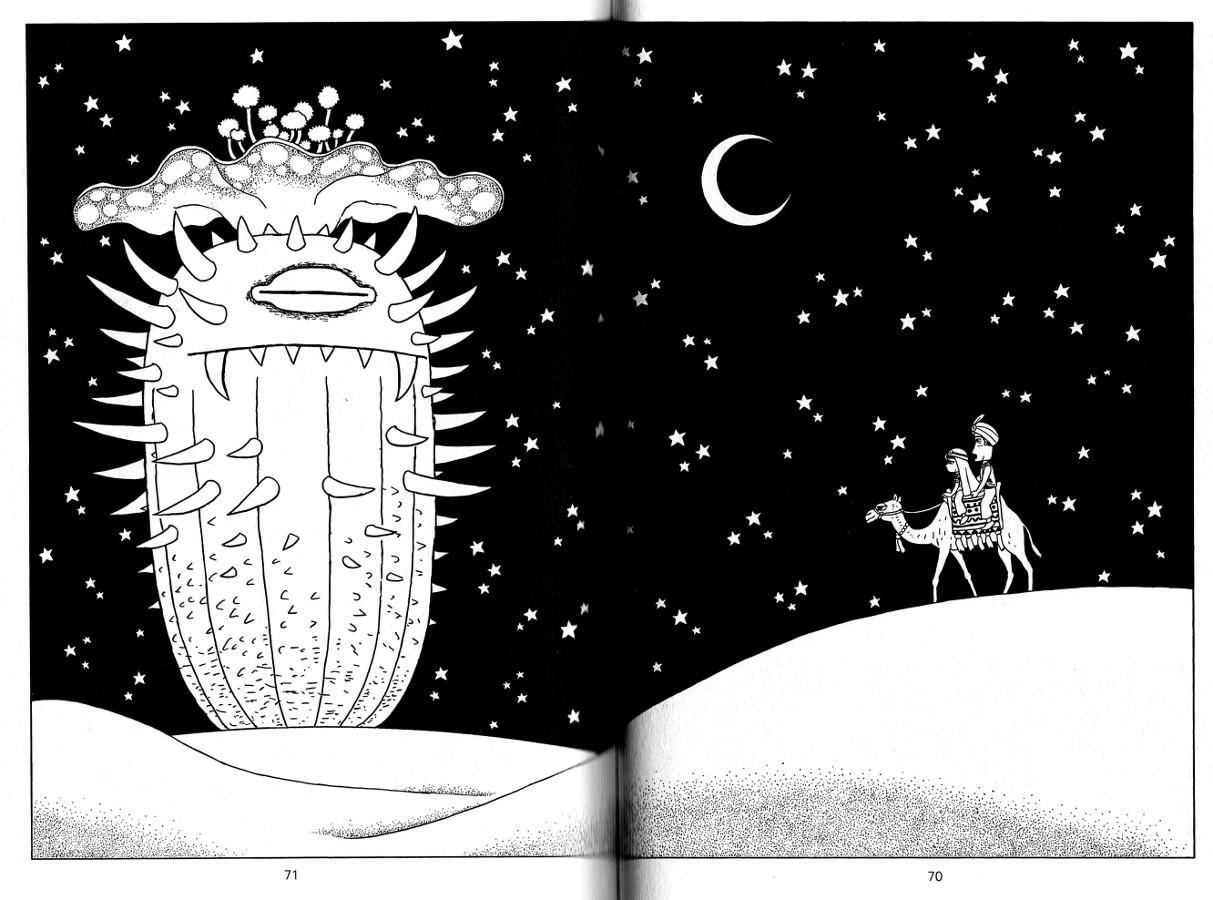
(A cactus dream.)
Saboten no Yume (Cactus Dreams)
There's a yokai cactus that only blooms once every 500 years, and only generates one seed each time. Isshiki and Akiko see the announcement on the TV news, and that night they have a dream of visiting that cactus out in the middle of a desert. The next day, he notices that his own cactus collection has a strange little cactus he's never seen before. Then, he's called by the police to assist in a murder case. The victim is identified as a local troublemaker that had been previously arrested for poisoning cats. One of the people interviewed in the neighborhood is a local leader whose cat had been poisoned. This guy also has the same weird cactus in his green house. The next day, the head of a hospital is found dead in his home. This victim had covered for his son, a doctor guilty of malpractice and who had killed the town leader's wife the year before. Isshiki notices that both of the weird cactii are getting bigger, and the town leader's cactus has blood stains on it. An analysis of the victim's bodies also shows that they died from multiple fixed-location puncture wounds. When Isshiki confronts the incompetent doctor at a restaurant about his late father's crimes, the cactus crashes through the window, interrupting him to say that he's been in a dream ever since the story started. Isshiki wakes up. The cactus had heard Isshiki's call for a new mystery story, and had been writing one for him all this time - the dream was the story it was writing. But, now its time in this world is up and it has to leave. It hands Isshiki the manuscript and vanishes. Unfortunately for the hero, he can't read yokai text, and his chair is now full of large needle holes.
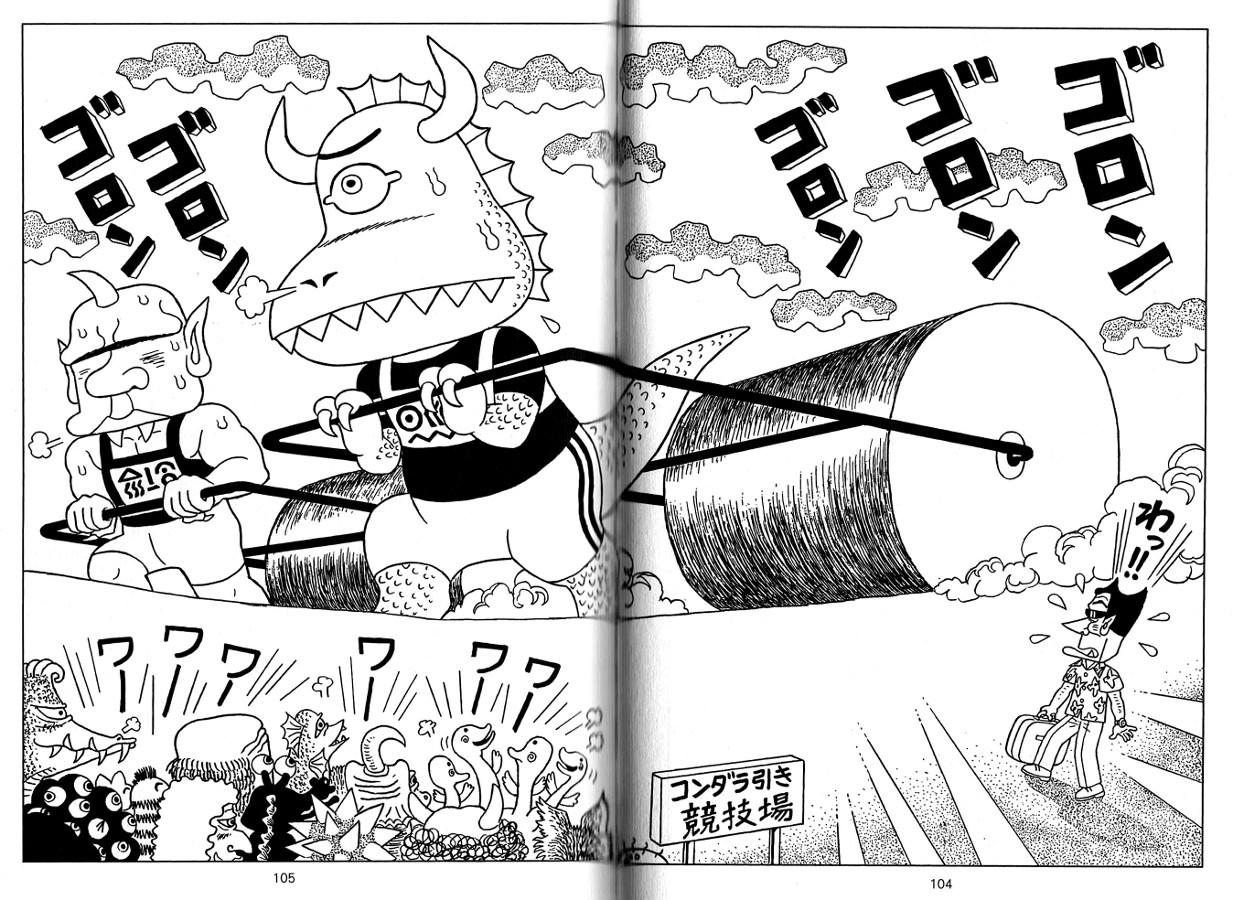
(Andorodoro (bottom right) discovers the yokai sports village.)
Kamakura Mishon (Kamakura Mission)
Takos Andorodoro is a hit man who looks like a yokai, and works for a third world dictator, eliminating his boss' enemies. After the latest hit, he's summoned to the leader's office and told that he has a new mission. There's another Olympics coming up, and the leader wants to ensure that their athletes get more gold medals this time, so the assassin is to go to Japan and track down a new energy drink, "doronawa," that will get past all the known doping tests. Andorodoro flies to Japan, where he sees many other spies all looking for the same drink. It's sold out of the shops, but Ando is told to go to a Sports Village, which may still have some left. He follows the directions, gets lost, and happens upon a yokai town with monsters competing against each other. Additionally, he's being tailed by Kisaki, a Japanese government agent that wants to know what he's up to. The two find themselves competing together in the games with the yokai. One of the events involves a smoke that removes the evil from people's hearts, and Ando confesses his history to Kisaki. He was named after a dark god in the hopes he'd grow up strong, and he'd originally been a strong athlete, but he'd been forced to join his country's army at age 15, and things went downhill from there. Most of the yokai events are pretty easy, and for the marathon, everyone gets gold medals (actually just tin plate). In the end, Ando has had fun, and almost forgets why he was there in the first place. In the souvenir shop, he spots the doronawa sign, and gets a case of bottles. The clerk mentions that if a human drinks it, they'll burst into flames, so it's not useful as a PED. He and Kisaki promise to keep in touch, but when Ando gets back home, he's surrounded by soldiers and told the leader had just been overthrown by a military coup, and Ando is their next main target. He drinks a bottle of doronawa, his body gets incinerated by it, and his soul transmigrates to the realm of the dark god Andorodoro, where he's recognized as the land's new ruler. He mourns not being able to see Kisaki again, but dedicates himself to slowly improving his new domain.
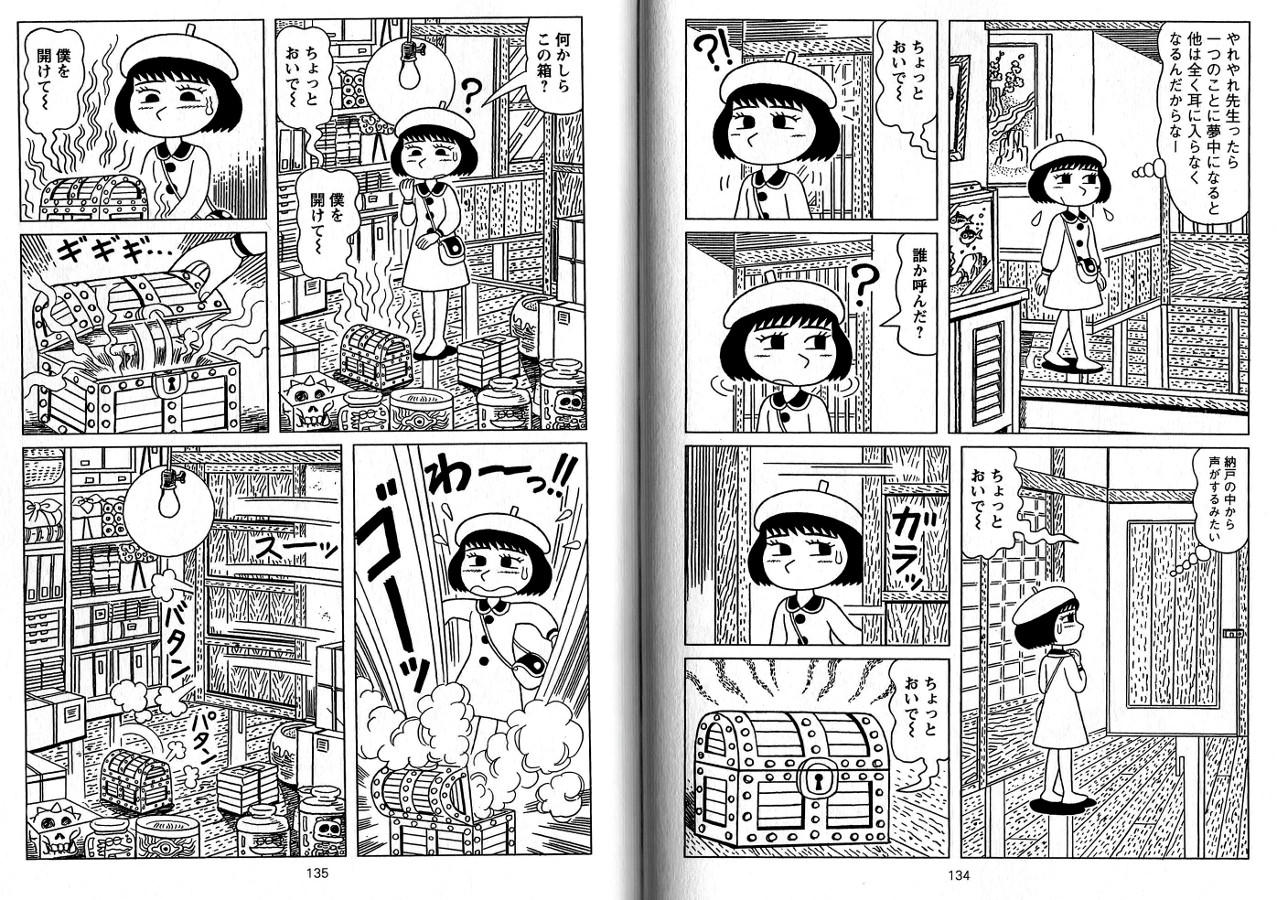
(Akiko finds the Rip van Winkle chest.)
Rippuvan Uinkuru no Tamatebako (Rip Van Winkle's Treasure Chest)
Isshiki and Akiko are watching the TV news, and a story on three school girls that have disappeared and not been found. Akiko says that she's going to go out shopping, and her husband warns her to be careful because she's easily mistaken for a child (she gets confused by this because she's 23). Before she gets outside, she hears a voice telling her to do something. She opens a storeroom and finds a chest. She opens it, and disappears in a puff of smoke. Time passes, and Isshiki gets concerned that Akiko hasn't come back yet. Unable to find her, he contacts the police and soon here's a nation-wide alert, and everyone that thinks she's cute (human and yokai) forms fan clubs for her. A few days later, one of his acquaintances, a kind of Buddha, comments that this is just like when Isshiki had disappeared at age 10, but he doesn't remember any of that. Isshiki goes to a library and looks in old newspapers, finding an article detailing his disappearance along with that of two other younger boys. He was the only one of the three to reappear 2 weeks later. He talks to an older female relative that repeats the story, indicating that he'd been rescued by his own grandfather. He goes into his grandfather's study and looks at his research notes. In there he learns of the Rip van Winkle chest. He summons the chest and goes inside, and almost immediately meets the two boys that had disappeared before, and had been his playmates while he'd been in the world inside the chest the first time. They go to a castle, where Akiko refuses to play act as a princess, while the other three missing girls are having a great time. Additionally, there are three scary-looking yokai men that are volunteers, taking care of the children abducted by the chest. In fact, the two boys had been abused by their father, and the girls were bullied at school and had been about to commit suicide when the chest found them. The chest had gotten confused by the weird stuff in Isshiki's house, and had thought that both he and Akiko had been in danger. The other kids refuse to leave the chest, so Isshiki and Akiko exit at the end of the normal 2-week cool-down period. Unfortunately, Akiko's new human fan clubs now stand outside her house, yelling for her to pose for photos for them during the day, and the yokai clubs yell for her at night.
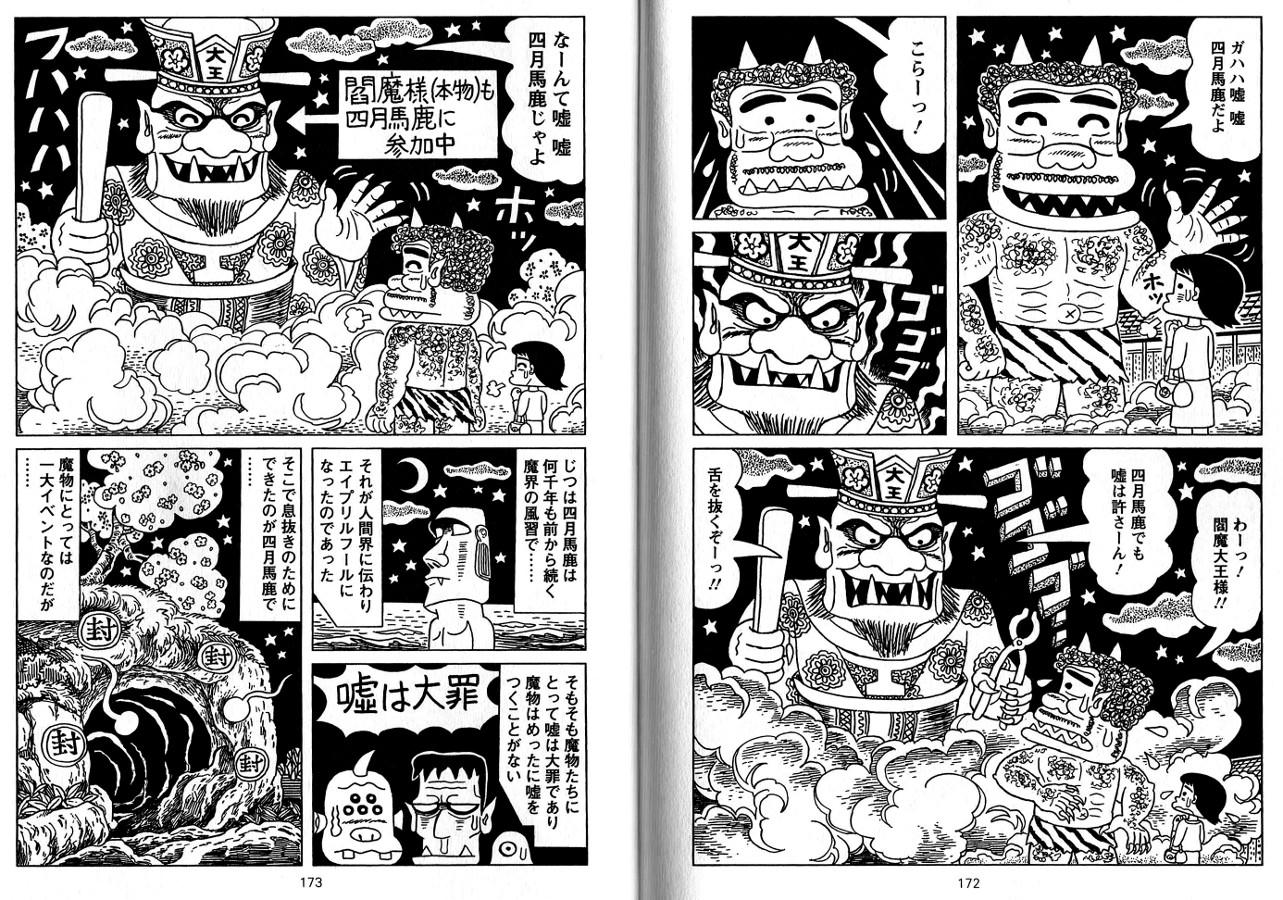
(Enma Daioh: "You lied, so I'll rip out your tongue. April Fool's. Just kidding - I love a good joke, too.")
Shigatsu no Kyousoukyoku (April Capriccio)
One morning, the human TV news announces that zombies are attacking people outside the Kamakura train station. But, it's April 1st, so "April Fools!" Even the yokai world plays pranks on each other. One monster threatens to eat someone, then yells out "April Fools." Enma Daioh, the gate keeper to the afterworld shows up to rip out the demon's tongue as punishment for lying, then yells out "April Fool's" as well. Elsewhere, Kidobo and his group of partners (they're pictured on the back cover below) are working on a plan to overthrow the current yokai leader. Kidobo (I may have the pronunciation wrong) was the one that set up the zombies at the train station that morning. His idea is to use April Fool's Day to pretend that they are a TV director and actors taping an episode of a prank show involving the yokai leader. Kidobo arranges with a smuggler to buy 50 hand guns and boxes of silver bullets, but pays for the transaction with fake money. The group gets to the leader's palace, bluffs their way in, and opens fire on the yokai leader. Problem is, the smuggler sold Kidobo plastic pellet pistols as a joke, and the leader fakes dying as part of the punchline ("April Fools!"). Kidobo escapes, and vows to try again, forgetting to release the zombies from his contract with them. So now, the zombies are roaming outside Kamakura station for several more days after April 1st before finally rotting away.
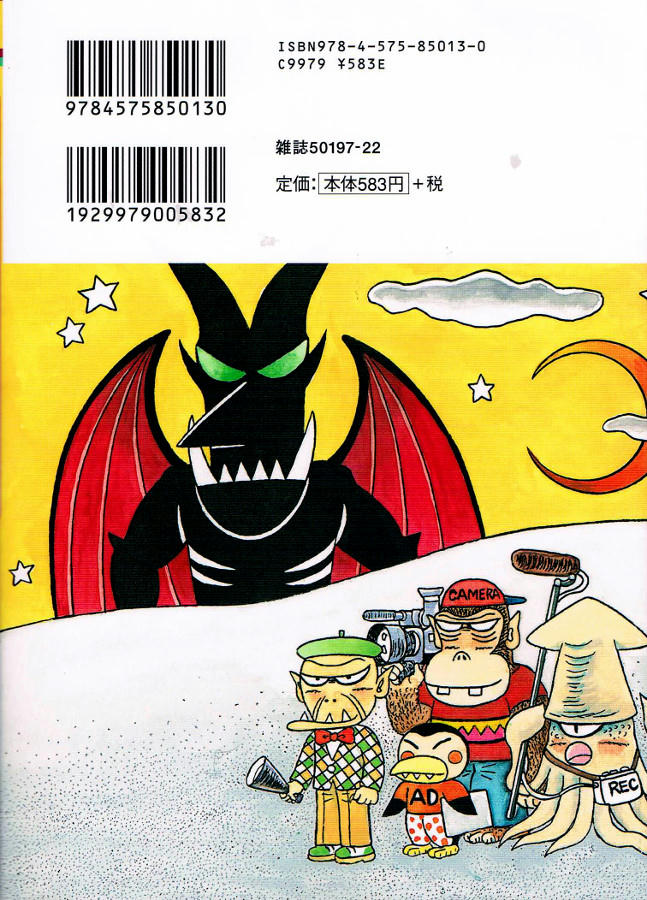
(Dark god Andorodoro in the background, and Kidobo and his "TV crew" in the lower corner.)
Summary: The chapters here are all fairly innocuous. The ideas are interesting, though, and the humor is pretty gentle. Recommended if you don't mind the character designs, and you like yokai.
